

Study Medicine in Romania in English
Welcome to your comprehensive guide to pursuing a medical education in Romania with English as your language of instruction. If you’re considering a career in medicine and exploring international options, Romania offers a unique blend of quality education, affordability, and diverse cultural experiences. In this guide, we’ll explore why studying medicine in Romania is an excellent choice for aspiring doctors.
Romanian universities are known for their high educational standards and modern facilities, ensuring that students receive a top-tier education.
Romania stands out for its cost-effective medical education. Tuition fees in Romanian universities are considerably lower than in many Western countries, making it an accessible choice for aspiring medical professionals.
Language should never be a barrier to your dreams. Romania offers a wide range of medical programs taught entirely in English, eliminating language barriers and making the curriculum accessible to international students.
A medical degree earned in Romania carries international recognition. Whether you plan to practice medicine in Europe, North America, or elsewhere, a Romanian medical qualification opens doors to a world of opportunities.
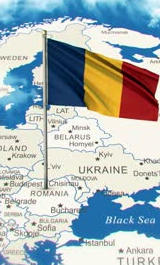
Contact us free of charge and we will answer any questions you may have
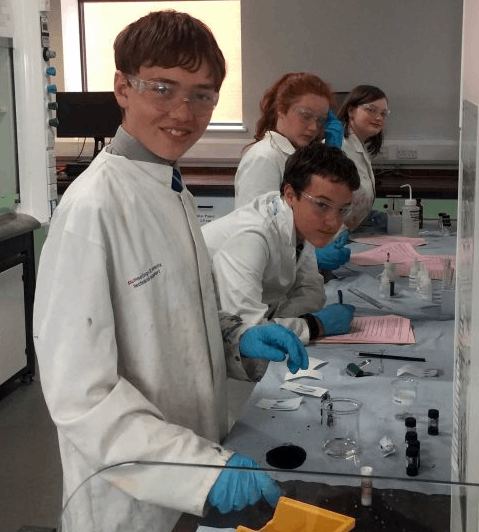
Exploring Medical Education in Romania
Romania boasts a well-established medical education system that combines rigorous academic training with practical experience. Here are some key highlights:
- Program Structure: The six-year curriculum in Romania is carefully designed to provide a holistic medical education. The first years emphasize the fundamental sciences, ensuring a strong theoretical foundation. Later, clinical rotations immerse students in real medical scenarios, fostering competence and confidence.
- Admission Requirements: To secure a place in a Romanian medical program, you’ll need to meet specific admission criteria. While these criteria can vary by university, a strong background in science subjects and a competitive score on the entrance examination are typically required.
- Duration of Studies: The six-year duration of medical studies in Romania includes both preclinical and clinical phases. During clinical rotations, you’ll work closely with experienced healthcare professionals, gaining valuable insights and practical skills.
Romania’s medical education system prides itself on producing well-rounded healthcare practitioners who are not only knowledgeable but also compassionate. The blend of theory and hands-on experience ensures that graduates are prepared to meet the complex challenges of modern healthcare.
Reasons to Choose Medical Studies in Romania
Here are six compelling reasons why Romania is an excellent destination for medical studies:
Romanian universities offer quality medical education at a fraction of the cost compared to many Western countries, making it accessible to students from diverse backgrounds.
Romanian universities maintain rigorous academic standards and are known for their commitment to excellence in medical education.
Romania provides ample opportunities for clinical exposure. With access to modern medical facilities and hospitals, students gain practical experience from day one.
Romanian universities actively engage in medical research, offering students the chance to contribute to ground-breaking projects and innovations in healthcare.
Romania is recognized for its safety and high quality of life. As a student, you can enjoy a secure and comfortable environment that promotes effective learning.
Beyond your studies, Romania offers a rich cultural experience. Explore the country’s history, traditions, and vibrant cities while pursuing your medical degree.
Romania’s commitment to medical excellence is further underscored by its significant investments in healthcare infrastructure and technology. This ensures that students have access to state-of-the-art facilities and equipment, enhancing their learning experience and preparing them for the modern healthcare landscape.
Best Medical Universities in Romania and Cost of Study
The affordability of medical education in Romania is a significant advantage for international students. Tuition fees for medical programs typically range from £4,500 to £8,000 per year, depending on the university and program. This makes Romanian medical universities a cost-effective choice when compared to many Western institutions.
Additionally, many Romanian universities offer scholarships and financial aid to eligible students, further easing the financial burden. Scholarships may be based on academic merit, need, or other criteria, and they provide valuable support to students pursuing their medical degrees.
It’s advisable for prospective students to explore these scholarship opportunities and inquire with their chosen universities about the availability of financial aid. This proactive approach can help make studying medicine in Romania not only an enriching experience but also an affordable one
Carol Davila University of Medicine and Pharmacy
Located in the capital city of Bucharest, this university offers a rich academic environment and a diverse student body. It’s known for its emphasis on research and clinical training.
University of Medicine and Pharmacy “Grigore T. Popa”
Situated in Iasi, this university is recognized for its academic excellence and commitment to medical education. Its English-taught program attracts students from around the world.
University of Medicine and Pharmacy of Cluj-Napoca
Located in Cluj-Napoca, this university offers a comprehensive medical curriculum in English. It’s recognized for its international outlook and dedication to fostering global healthcare leaders.
Each of these universities has a strong reputation for producing competent and compassionate healthcare professionals who make significant contributions to the field. The emphasis on practical training and research opportunities equips students with the skills and knowledge needed to excel in the medical profession.
Get in touch with us and we will answer all your questions:
FREE Webinar on 2nd May
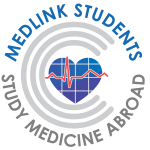
Join our FREE webinar on 2nd May 2024
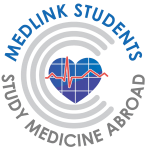
Find Universities with:

Study Medicine in Romania in English
Romania is a popular destination for international medical students. Tuition fees range between - per year.
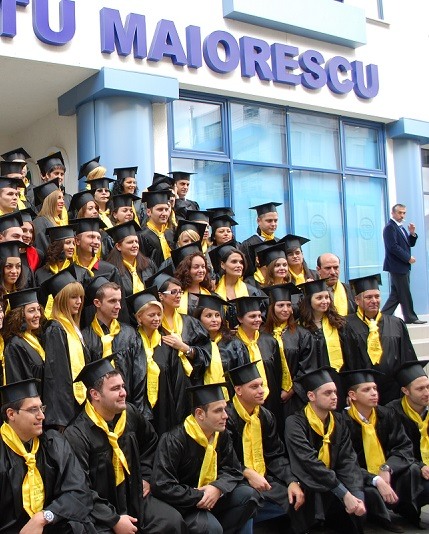
Living & Studying In Romania
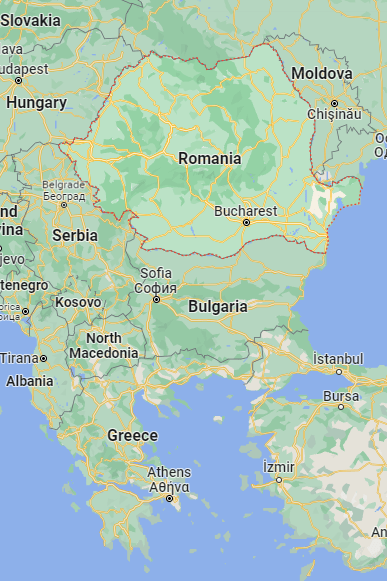
About Studying Medicine in Romania
Situated in Southeastern Europe, Romania has an estimated population of 19 million, and its capital city Bucharest has 1.7 million inhabitants.
The Romanian education system continuously changes and improves to meet high European standards and practices. Moreover, local schools invest in renovations to keep up to date with the latest developments in the medical field.
More than 40 medical colleges and universities offer medicine in English , be they in the capital city Bucharest or even in smaller towns like Craiova or Cluj. You are practically spoilt by choice.
In Europe, Romanian medical schools are a force to be reckoned with, especially tuition fees. Prices are more than reasonable, with costs ranging from up to per year. In addition, the living costs are significantly cheaper compared to most other countries in the European Union.
Why Study Medicine in Romania?
When looking to study medicine abroad in English, look no further than Romania. Here are the top reasons to help you make the right choice:
- The MD or DMD degrees you get are recognised worldwide
- Admission requirements are lower than countries from the West
- Tuition fees and living costs are very affordable
- You can study in English or French
- A wide variety of medical universities to choose from
- Less competition for entry compared to countries like the UK
- Some medical schools do not require passing an entrance exam
- Modern facilities and hospitals with top-notch technology & equipment
The Best Medical Universities in Romania
Check out our price breakdown of medical schools in Romania
Tuition fee
- Medicine (3)
- Dentistry (1)
- Veterinary (1)
- September / October (3)

Carol Davila University of Medicine & Pharmacy
Carol Davila is Romania's oldest medical school, founded all the way back in 1857. Those who wish to study medicine and dentistry in Europe will find an amazing MD programme taught entirely in English. There is no entrance exam requirement, and degrees will be recognised throughout the world, including Europe, UK, US and Asia.
€ 8000 / year
Medicine, Dentistry

Titu Maiorescu University
Titu Maiorescu University was founded in 1990 as a private, non-profit university in Bucharest, Romania. Its esteemed courses in medicine and pharmacy, which are offered to international students as well as local ones, have won the university's inclusion in the prestigious US Yearbook of Medical Faculties.
€ 10000 / year
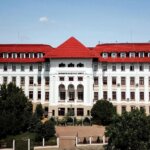
University of Medicine & Pharmacy Craiova
Craiova is the home of the University of Medicine and Pharmacy. This medical school, which was founded in 1947, has over 20,000 international students. This educational institution offers Medicine and Pharmacy classes in English to its pupils.
€ 6000 / year
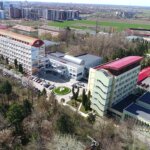
Banat University of Agricultural Sciences & Veterinary Medicine of Timisoara
Established in 1945, Banat University is one of the most prestigious ones in Romania which specialise in life and veterinary sciences. Its 6-year veterinary medicine programme is available entirely in English, making it ideal for international students who wish to study in Europe.
€ 5500 / year

Oradea Medical University
The University of Oradea was founded in 1990 and is one of the largest institutes of higher learning in Romania, currently boasting more than 14,000 students and nearly 1000 staff members. Students can study medicine fully in English and do not need to pass an entrance exam in order to be accepted.

Ovidius University Constanta
Ovidius University is Europe's largest Black Sea university. It was founded in 1961 and hosts over 15,000 students, 1200 of which from abroad. The school offers courses in both dentistry and medicine and is officially recognised by the GMC.
€ 6500 / year

Dunarea de Jos University of Galati
Dunarea de Jos University of Galati, founded in 1974 is the most important institution of higher education in the South-East of Romania. Those who want to study medicine in Europe will find an amazing MD programme taught entirely in English. There is no entrance exam requirement, and the degrees are recognised throughout the world, including Europe, UK, US and Asia.
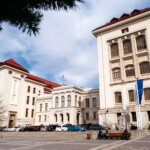
Grigore T. Popa University of Medicine
Grigore T. Popa University was founded in 1879, making it one of Romania's oldest universities with Medicine, Dentistry, and Pharmacy taught in English. The university is considered a trailblazer in the world of medical education, with no entrance exam and 16 research centres available to international students.
Medicine, Dentistry, Pharmacy

Iuliu Hatieganu University of Medicine and Pharmacy
Cluj-Iuliu Napoca's Hațieganu University of Medicine and Pharmacy was founded in 1919, making it Transylvania's oldest medical school. It's currently attended by over 6000 students of pharmacy, medicine, dentistry, stomatology, and pediatrics. Pre-existing students who wish to study medicine in English in Europe may also transfer.
€ 7500 / year

Vasile Goldis Western University
The "Vasile Goldiș" Western University of Arad is a private university in Arad, Romania founded in 1990. Today it's home to 6000 students and six facilities, including medicine. Those who wish to study medicine in Europe can enjoy classes in English and a medical degree officially recognised around the world, including in the UK.
€ 6250 / year
Quick Facts

Tuition Fees In Romania

Medical Universities in Romania that Teach Medicine and Dentistry in English
1. Carol Davila University of Medicine of Bucharest . It was established in 1857 and is considered one of the best medical schools in Romania. With reasonable tuition fees and extremely cheap living costs, it’s become the first choice for many prospective students. Bucharest, this diverse and vibrant city, attracts hundreds of international students. After spending time in the capital city, you can see why they chose Carol Davila as their number one choice!
The tuition fees are per year. Carol Davila University offers 300 seats for medicine each year. Bucharest's living costs are about per month, excluding the monthly rent, which is 150 per month. There’s no entrance exam here, but candidates should have Biology and Chemistry at the high school level. The academic year starts on 1st October and is 28 weeks in total. The Carol Davila University of Medicine in Bucharest is one of the top medical schools in Romania and is recognised by the GMC.

2. University of Medicine and Pharmacy of Craiova . Some consider UMFCV the best medical university in Romania. It is located in a quaint city called Craiova, in the southwest region of the country. It has been known as the safest local city. Craiova may be smaller than the capital, but it’s by no means worse off for it! The university is next to Romanescu Park, where students often have lunch and wind down after classes
This Romanian university is highly regarded for its academic excellence and teaching standards. It is quickly rising through the ranks to overtake even the capital city of Bucharest when it comes to education! There are no entry exams here, just like most medical universities in Romania. Still, it would be best if you had good high school grades in Chemistry and Biology. Competition is high because seats are limited – 50 for medicine and 30 for dentistry. Tuition fees are per year, and the study duration is 6 years for both options. Living costs are as little as per month. The GMC recognises UMFCV.
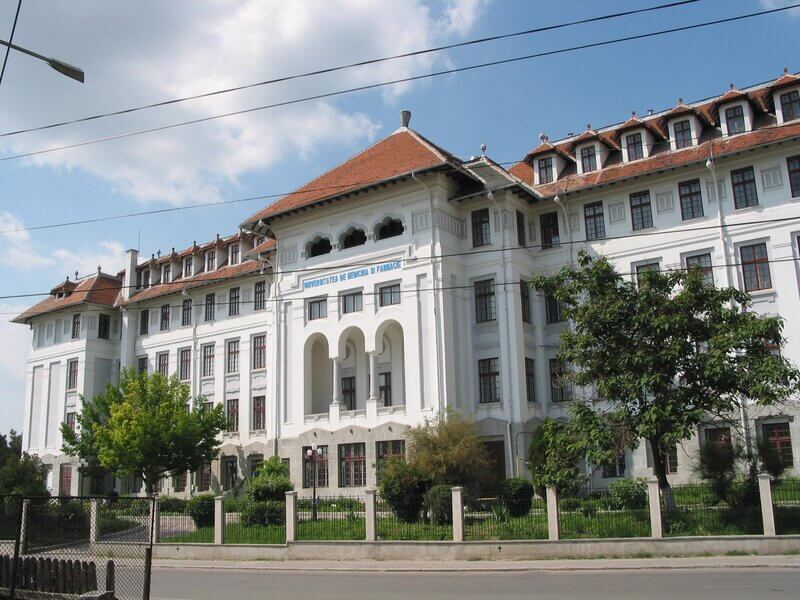
3. Titu Maiorescu University of Bucharest . This is another university that’s situated in the capital city of Bucharest. It was founded in 1990 and even awarded the “Trusted” moniker (the maximum rating given by the institution) by The Romanian Agency for Quality Assurance in Higher Education in 2015. With over twenty hospitals situated around Bucharest, you’ll be hard-pressed to find a better place to help hone your clinical practice skills while studying medicine.
The university, along with others from all around Romania, adheres to strict curricula following international higher education standards and EU guidelines. Titu Maiorescu usually appeals to those who wish to study dentistry in the country. The university also offers an excellent medicine course in English. Tuition fees are for EU citizens and for non-EU per year. Seats in this university are very limited, and competition is high, but it pays off. There’s also an entry exam in basic science and English. When you graduate, you will get an international degree in medicine recognised by the UK GMC.
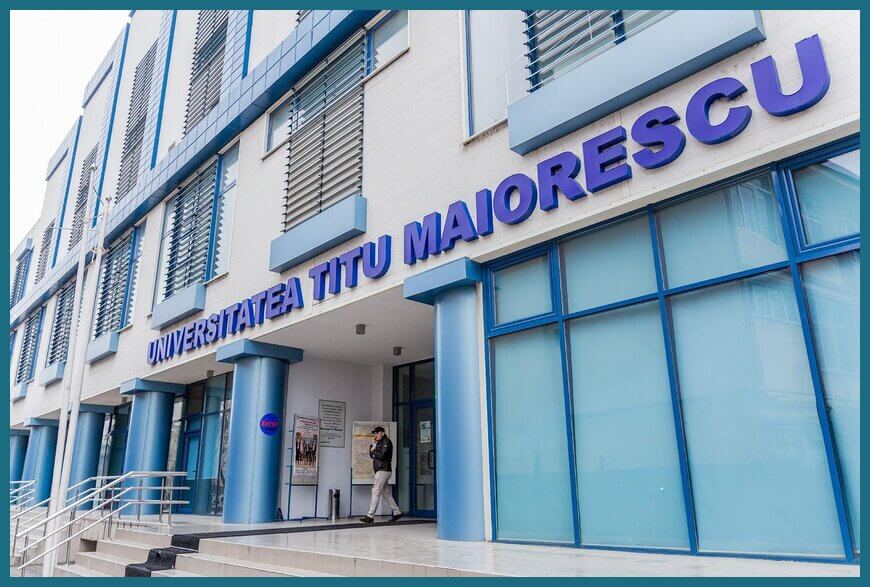
4. Vasile Goldis Western University of Arad . Founded in 1990 and named after a prominent local politician Vasile Goldis is situated right on the Mures River, with an industrial and transportation hub at its core. As it’s one of the more modern universities in the country, you will expect to find state-of-the-art facilities as well as a curriculum to match it.
Arad is now becoming one of the fastest developing cities in Romania. Tuition fees at Vasile Goldis Western University of Arad are per year, and the university offers 45 seats for EU citizens and 45 seats for non-EU citizens. Living costs in Arad are about per month, everything inclusive. There’s a competitive entry test in Biology and Chemistry. Naturally, the university is recognised by the GMC.
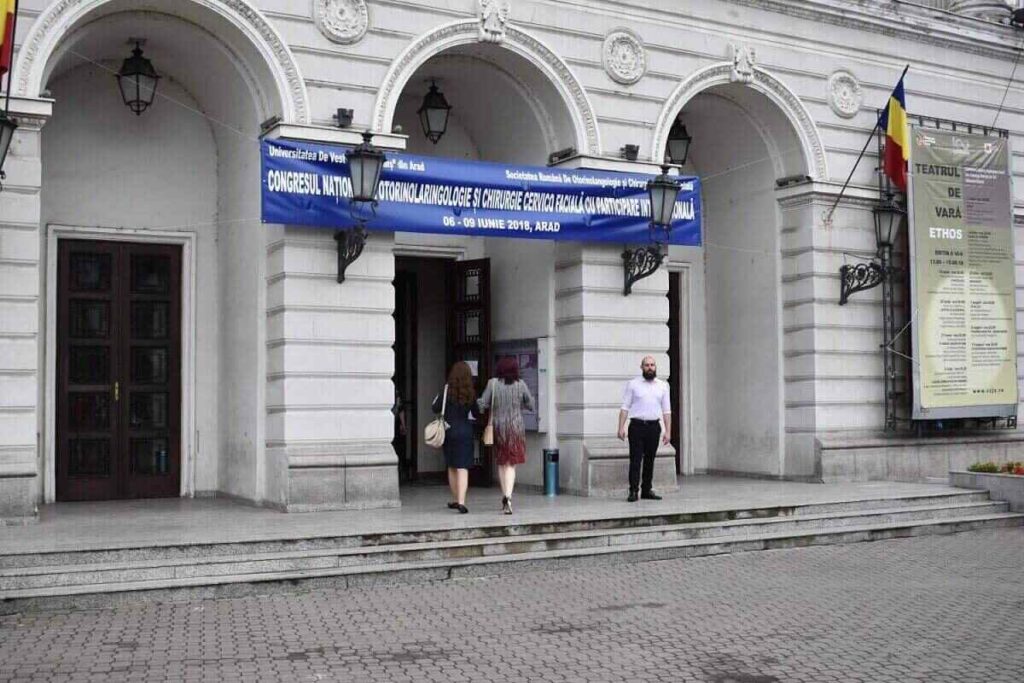
5. Ovidius University Constanta . Constanta is one of the youngest and most modern medical universities in Romania. It holds one of the largest libraries in the country and is only 220km from the capital city Bucharest. With a rich history and a beautiful Black Sea coast, you will find something to marvel at in Constanta.
The exciting seaside life attracts many international students to the city. Tuition fees are per year, and living costs in Constanta are as low as – per month. You can enter Ovidius University with a certificate for English proficiency and good grades in Biology and Chemistry. The GMC recognises the university diploma.
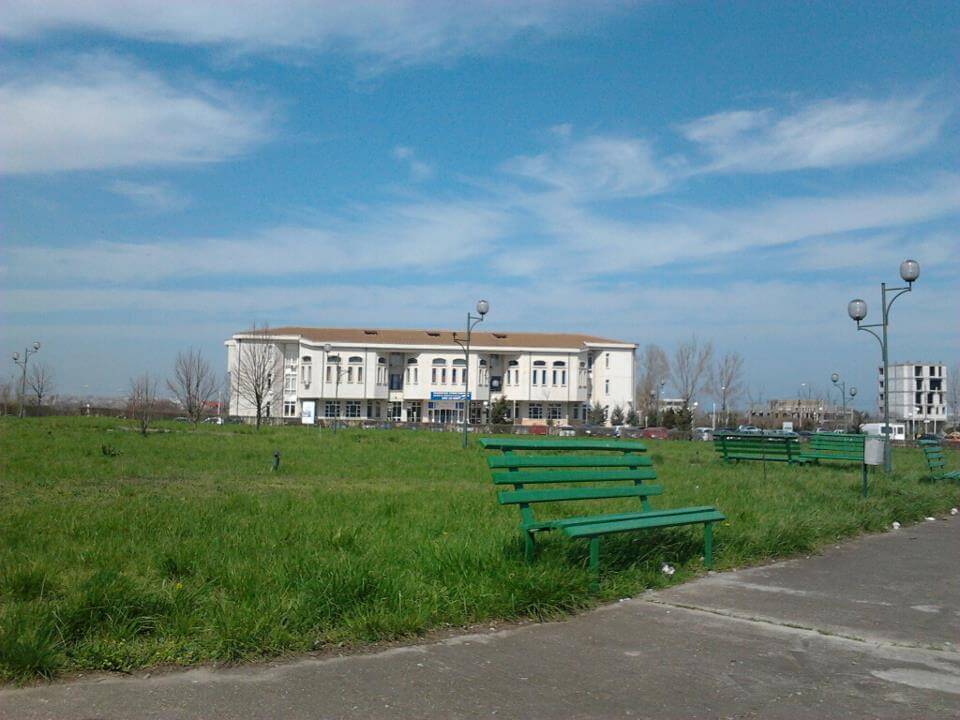
6. Iuliu Hartieganu University of Medicine and Pharmacy Cluj . It is located in the gorgeous city of Cluj, situated in northwest Romania. With state-of-the-art facilities, you might almost forget that UMF Cluj is the oldest medical education institution in the northwestern part of the country. Tuition fees for Medicine, Dentistry and Pharmacy are per year. The cost of living in Cluj is around to per month with rent. No entrance exam. GMC-approved
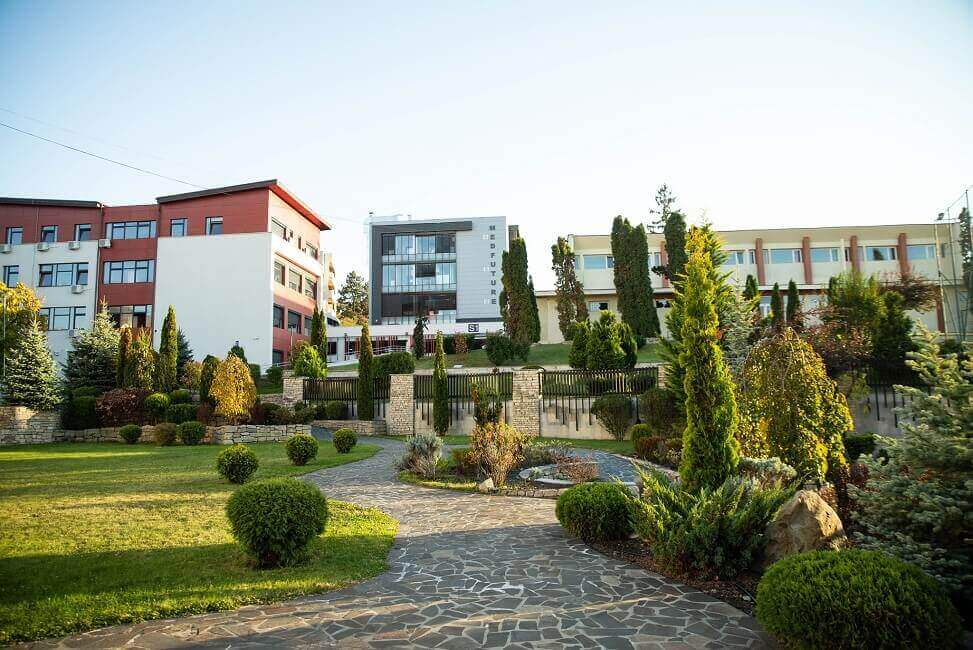
7. Victor Babes University of Medicine of Timisoara . UMF Timisoara was founded in 1944 and named after one of the founders of modern microbiology, Victor Babes. The three faculties make up the bulk of this university, with Medicine, Dentistry and Pharmacy on offer for its thousands of students. A popular attraction for students willing to study dentistry in Romania. Tuitions fees are per year, and living costs are around per month. A 50-question entrance exam is for everyone who wishes to study here. Graduates get a diploma recognised by the GMC and giving them the right to work as doctors in the UK.
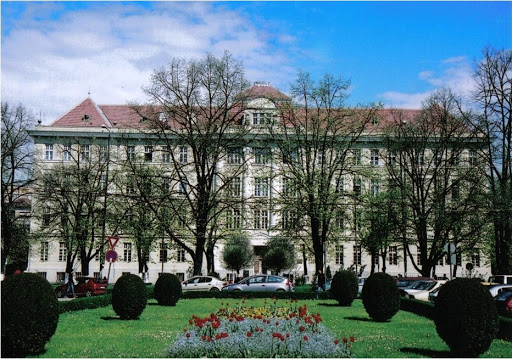
8. Grigore T. Popa University of Medicine of Iasi . Named in honour of a famous Romanian scientist, UMFI offers both Medicine and Dentistry in English. Situated in one of the largest cities in the country, it is a cultural hub with excellent amenities to offer prospective students. There’s no entrance exam for this medical university. Tuition fees for medicine and dentistry are per year, and available seats are 200 and 70, respectively. The cost of living in Iasi is about per month. GMC-approved university.
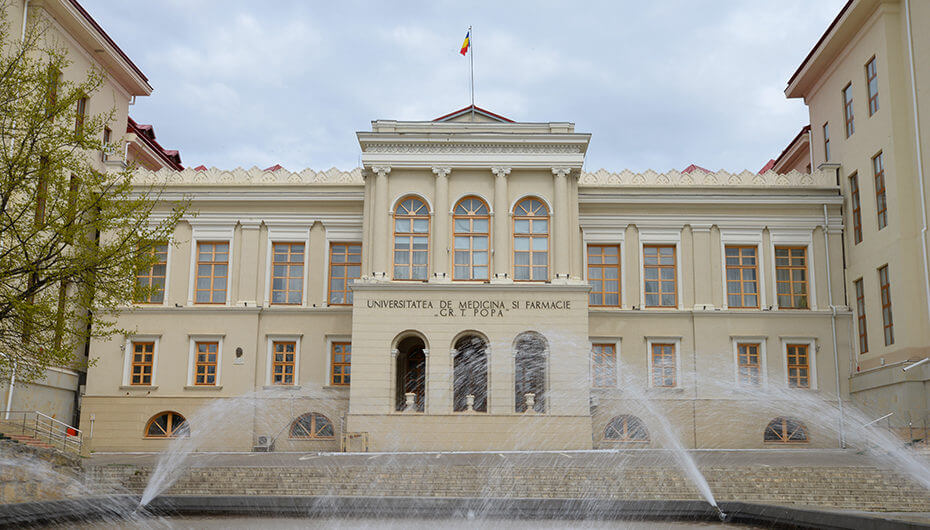
9. Oradea Medical University . Situated in the northwest part of Romania, Oradea is one of the largest universities in the country, with 15 faculties, over 14,000 students and 930 academic staff. Founded in 1991, it has been acknowledged as one of the more prestigious medical universities in Romania. To get admitted here, you need to pass the entrance exam. Tuition fees are per year, and living costs in Oradea are between and per month. The GMC approves the university.

10. Banat University of Agricultural Sciences & Veterinary Medicine of Timisoara (USAMVBT). It was founded in 1945 and nowadays is among the most preferred universities to study veterinary medicine in English . It's low tuition fees and affordable living costs in the city of Timisoara are also among the facts that prospective students consider while choosing their schools
The city is home to many universities, and many of its inhabitants are students. It is a great place to socialise with people who have similar interests as you. Living in Timisoara costs around per month, including the rent.
The school requires entrance exams, but your high school grades are also considered in your ranking score. The tuition fee at this school is per year. USAMVBT is recognised by the European Association of Establishments for Veterinary Medicine(EAEVE), which allows students to practise everywhere around the world after graduation.
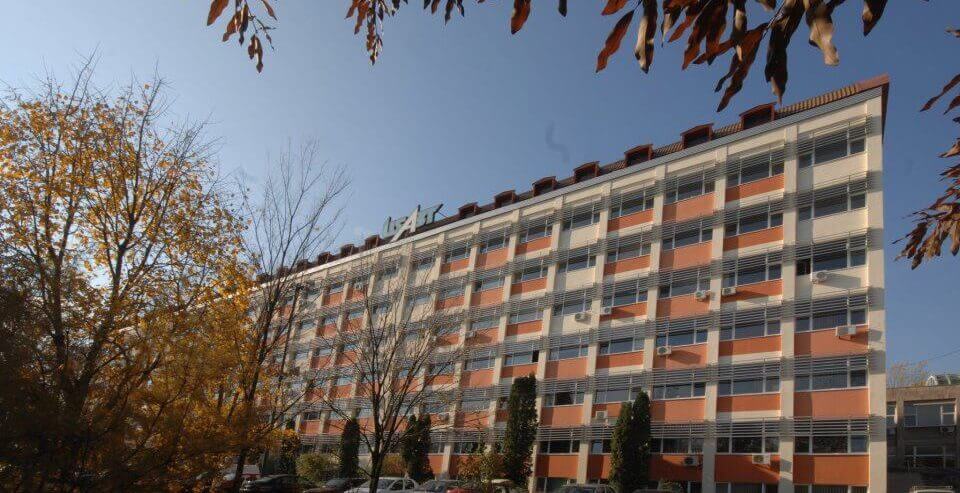
11. Dunarea de Jos University of Galati . Established in 1975, nowadays has earned its place among the most popular medical schools in Romania. The Faculty of Medicine and Pharmacy at the Dunarea de Jos University of Galati has a modern infrastructure, laboratories and workshop rooms for various cutting-edge medical research. All that and access to high-performance clinics, a computerised library in continuous development, new dormitories and sports facilities. If you are looking to study medicine in Romania , you are very close to reaching your goal.
Every year, the University welcomes more than 2500 international students, and the Faculty of Medicine and Pharmacy takes over 180.
Medical school doesn't require entrance exams, but your high school grades are also considered in your ranking score. The tuition fee at this school is per year. The degree is recognised by the World Health Organisation and is listed in the World Directory of Medical Schools. Moreover, the medical curriculum meets all the international, European, and GMC standards for proper education and doctor’s licensing.
Entry Requirements to Study Medicine in Romania in English
Universities in Romania set their admission requirements. Generally, most universities require students to have passing marks in Biology and Chemistry at A-Levels or high school. Here is a complete list of the high school diplomas needed for admission. They also require an English proficiency certificate for non-native speakers. If you have a GCSE or BTEC, please enquire with Medlink Students regarding admission.
Furthermore, some universities have an entrance examination. There is a basic science exam for Titu Maiorescu University. Victor Babes University has a similar exam, while Banat University has an oral exam on a preselected topic.
How Much Does It Cost to Study Medicine in Romania?
Tuition fees in Romania start from , and living costs are between and per month with rent included. These costs make Romania one of the most affordable countries for medical education in the European Union . Tuition prices for non-EU students can be higher in some universities, but they are still competitive with the low living costs.
Tuition Fees to Study Medicine in Romania
Tuition fees for medical universities in Romania range from to per year. Since the country is a member of the European Union, prices for EU and non-EU citizens may differ. Still, tuition fees to study medicine in Romania are considered relatively low to low midrange for the continent.
Living Costs in Romania for International Students
Living costs for one person are and per month in Bucharest. Rent prices in the capital city range between and for a single-bedroom apartment. Naturally, prices in Bucharest are the highest in Romania.
In smaller cities like Iasi, Craiova, and Arad, living costs are around . However, rent prices are significantly lower at average prices of around , , and , respectively. Most universities offer dormitory rooms, and they can additionally lower the monthly costs for future doctors.
Romania is among the most affordable countries to live in within the European Union, and many international students consider this an advantage.
Graduate entry medicine in Romania
The universities on offer for medicine in Romania are 6 years only. The best thing to do with your degree is to get exemptions from the subjects you have already completed. You can do so as long as the modules taught in the medical university match the total number of hours and the course material in your previous degree. Medlink Students can help you with this procedure if you have at least 80% of the total number of hours for the subject.
Studying medicine in the UK can be very competitive, and there are only a limited number of places available. With such harsh requirements for entry, many people are denied their applications and cannot follow their dreams of becoming a doctor. Instead of giving up or continuously re-applying, again and again, year after year, it’s better to study medicine abroad . Romania welcomes you with open arms! Many thousands of people have been more than happy studying in this enchanting country. Isn’t it worth it to give it a shot yourself? Would you like to receive free expert advice on the most suitable university in Europe for you? Just submit a free application , and we’ll be in touch with you shortly.
Is Studying Medicine in Romania Good?
Medical universities in Romania enjoy worldwide degree recognition, modern facilities, and excellent opportunities for extracurricular activities. Furthermore, international students relish the rich local culture and appreciate the country's low tuition and living costs. Thus, Romania rightfully attracts hundreds of medical students from all over the world.
While education provides excellent value for its cost, there is so much more in Romania to entice international students for a full six-year stay.
Practical Reasons to Study Medicine in Romania
Here are the objective reasons to choose Romania as a destination to study abroad:
- Worldwide recognition of the degree
- Very affordable tuition fees
- Very affordable living costs
- No entry exams for most universities
- Study in English or French
- Available student dormitories
- Vibrant international student communities
- Member of the European Union
- Romanian culture and hospitality
Lifestyle Reasons to Study Medicine in Romania
Romanian cities have a unique charm that is hard to forget. The old town areas mix the Byzantine traditions of the old with the Western Medieval styles. The architectural landmarks are usually surrounded by buildings in an eclectic style from the late 19th century.
Romania has 6,000 years of traditions in winemaking. Local grapes are unique to the region, yet they receive worldwide appreciation. Furthermore, they perfectly complement the local cuisine. Visitors greatly enjoy the local pastries, soups, and traditional holiday dishes.
Finally, adventurers and travellers have plenty to see within Romania. Danube delta is famous for its boat trips that observe the wildlife. The Carpathian mountains are another destination celebrated by visitors. Transylvania, Bucovina, and Maramures are excellent locations for hiking and camping.
Study Dentistry in Romania
Medicine is not the only course offered by the top medical universities in Romania. Some local institutions give students a chance to study dentistry in English. Many students even opt to study dentistry in Romania as their first choice.
The leading dental school in Romania is located in the capital – Bucharest. Other dental schools in the country are located in Timisoara, Iasi, Cluj and Craiova.
Romania is an excellent destination for international students to study medicine. The local universities offer exceptional quality education in English and French. At the same time, tuition fees and living costs remain among the lowest in the European Union. In addition, the unique Romanian culture and landscape make the country an unforgettable experience for international students.
Do you feel like packing already?
Get Info On Any University In Romania
Frequently asked questions.
Yes, it will be. For your peace of mind, we recommend you check with your local medical council as well. A simple call should suffice.
It depends on which university you choose. Some universities require you to pass an entrance test while others rank you based on your high-school diploma sciences grades. It's best to contact our advisors for specific information.
The living costs in Romania are between and .
No. The tuition fees are ranging from up to per year.
Yes. Every Romanian medical university we work with offers a medical and/or dentistry programme entirely in English for international students.
Studying medicine in Romania is considered preferable to studying it in many Western countries. The quality of education and standards for doctors are the same, but the costs of tuition and the living expenses are significantly lower.
Generally, Carol Davila University of Medicine & Pharmacy, University of Medicine & Pharmacy Craiova and Titu Maiorescu University are considered to be the best medical universities in Romania. However, every university is different and tends to different student needs.
Yes. If you have stayed in Romania on a temporary residence permit for at least 5 years, you can apply for a full residence permit. Medical education continues for six years, so most international medical students can remain in the country and practise medicine there.
Other Countries in Europe

Study Medicine In the Caribbean In English
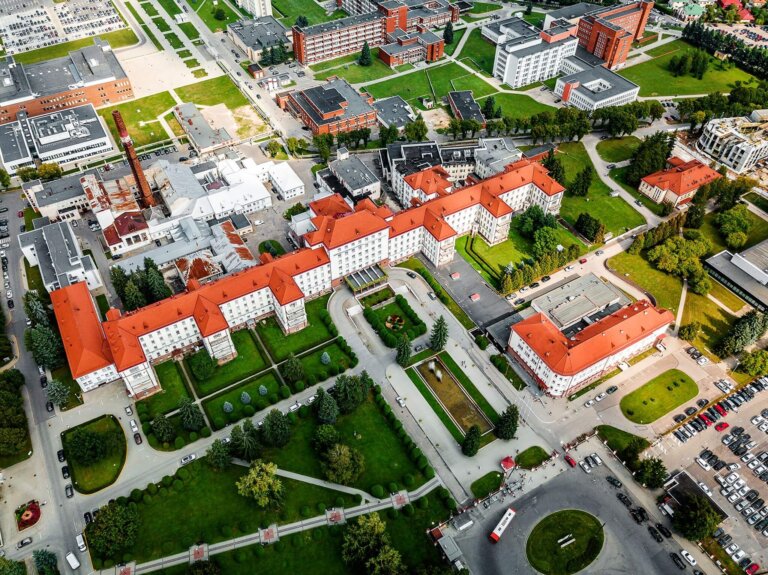
Study Dentistry in Lithuania in English
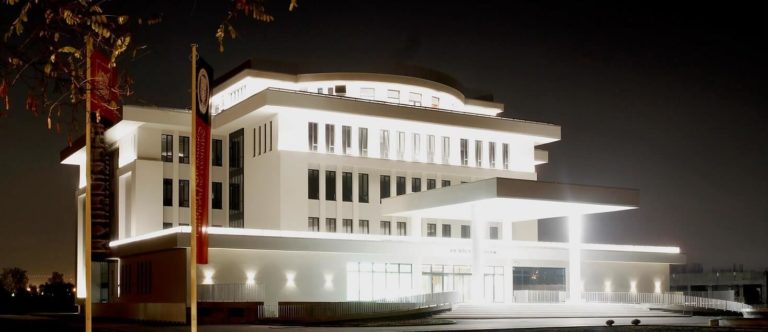
Study Dentistry In Bosnia & Herzegovina In English
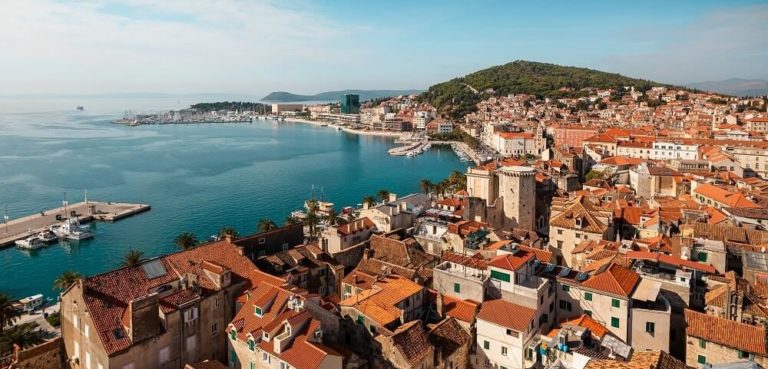
Study Dentistry in Croatia in English
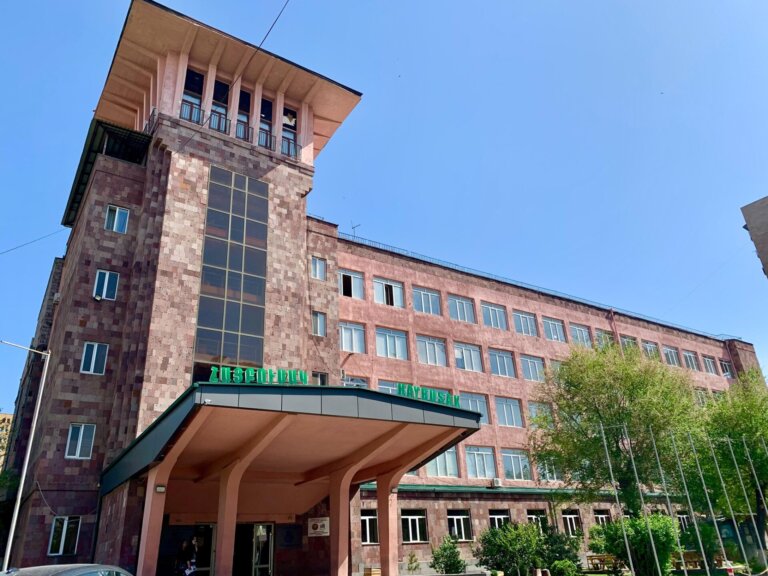
Study Dentistry in Armenia in English
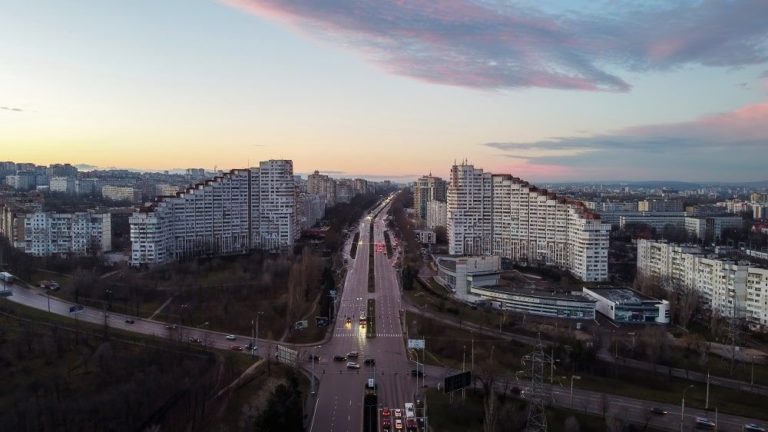
Study Dentistry in Moldova in English
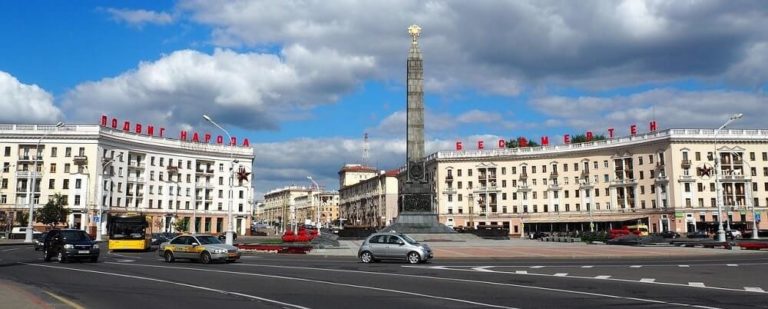
Study Dentistry in Belarus in English
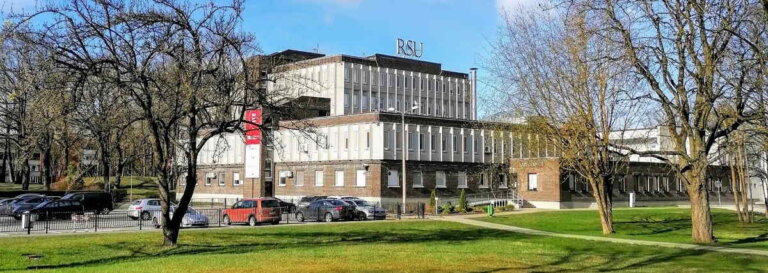
Study Dentistry in Latvia in English

Study Dentistry in Czech Republic in English

Study Dentistry in Serbia in English

Study Dentistry in Italy in English
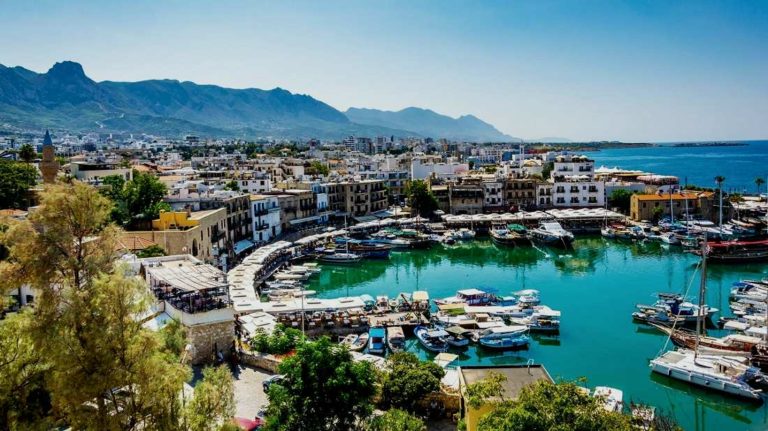
Study Dentistry in Cyprus in English
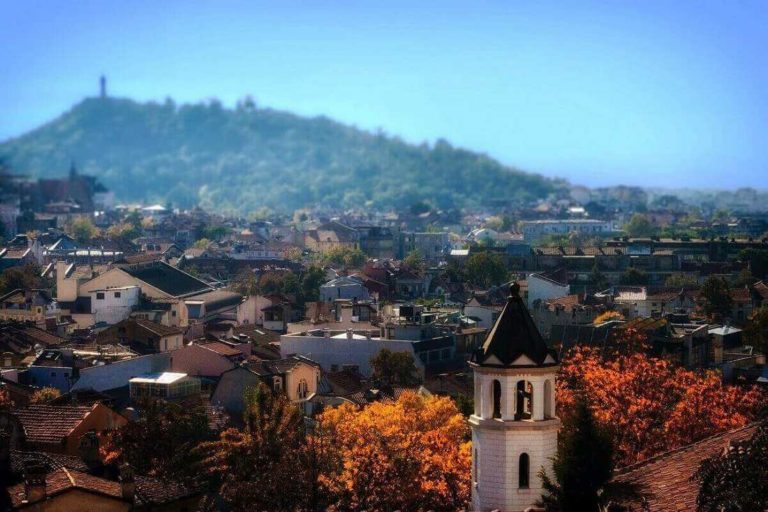
Study Dentistry in Bulgaria in English

Study Dentistry in Slovakia in English

Study Dentistry in Hungary in English

Study Dentistry in Romania in English

Study Dentistry in Poland in English

Study Dentistry in Georgia in English

Study Dentistry In Spain In English

Study Medicine in Lithuania in English

Study Medicine In Bosnia & Herzegovina In English
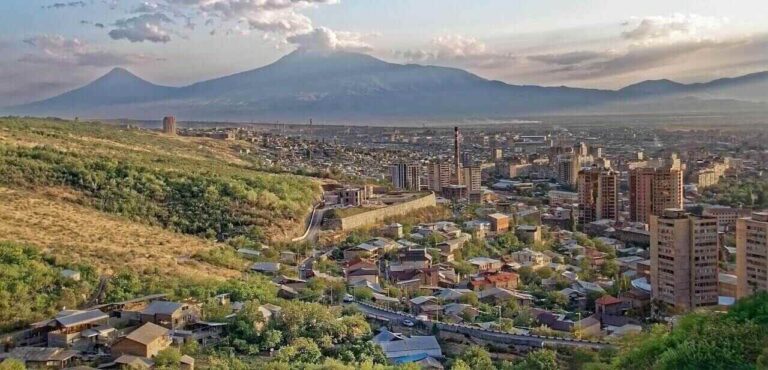
Study Medicine in Armenia in English
Study medicine in croatia in english, study medicine in moldova in english.
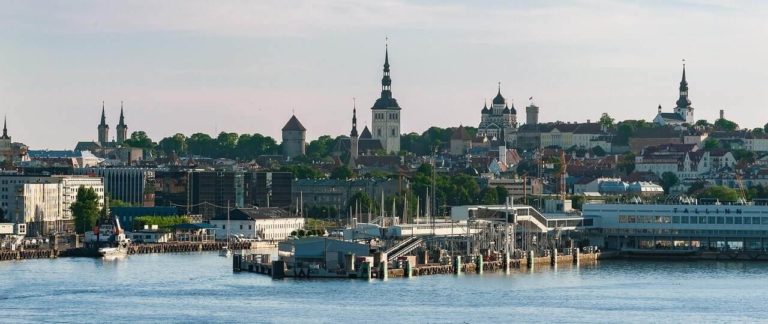
Study Medicine in Estonia in English
Study medicine in serbia in english, study medicine in belarus in english, study medicine in slovakia in english, study medicine in czech republic in english, study medicine in hungary in english.

Study Medicine in Germany in English
Study medicine in georgia in english, study medicine in italy in english, study medicine in cyprus in english.
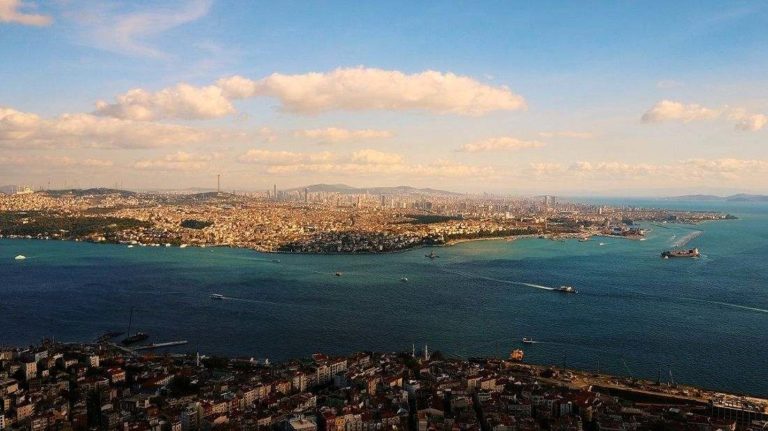
Study Medicine in Turkey in English
Study medicine in bulgaria in english, study medicine in poland in english.

Study Medicine In Ukraine In English

Study Medicine in Latvia in English
Saved universities.

Discover Your Options Abroad With a FREE Consultation
Check your email, to book a free call, with an expert advisor.

free webinar: study medicine & dentistry abroad

- Education in Romania
- Universities
- International Students
- Scholarships
- Admission requirements
- Application deadline
- Student visa
- Student accommodation
- Tuition fees and living cost
- International Transfer Students
- University Acceptance Letter
- Romanian language
Study in Romania
- Polytechnic University of Bucharest
- Schools in English, French, Germany and Romanian
- Bachelor and Master in Romania
- Arrival services Iasi
- Undergraduate & postgraduate studies
- Medicine in Europe
- Medical studies in Romania
- Romanian Medical Universities
- Study medicine in Romania
- Dentistry in Romania
- Study pharmacy in Romania
- Carol Davila university of Medicine
- University of Medicine Cluj
- University of Medicine Iasi
- University of medicine Timisoara
- Craiova Medical University
- Oradea medical university
- Constanta Medical University
- University of Arad
- Study Medicine Abroad
- Medical university program
- Medical university application
- Postgraduate Medical Study
Economics Studies
- Economics in Europe
- Economics in Romania
- Economic Universities in Romania
- Romanian American University
- Academy of Economic Studies of Bucharest
- Faculty of Economics of Timisoara
Veterinary Medicine
- Veterinary medicine abroad
- Veterinary medicine in Romania
- Veterinary medicine in Europe
- Maritime ingenering
- Navigation and Maritime Transport
______________________
+40 31 438 24 19
______________________
----------------------------------------
University of Medicine and Pharmacy of Cluj-Napoca , Targu Mures, Iasi , Timisoara , Constanta , Buchares t, Arad , Oradea, Sibiu, Craiova , etc. in Romania. Medecine, Dentistry and Pharmacy: English and French programs.
Tuition fees: 3200 to 5000/year, admission without exam!
Admission Requirements / Medical university application and Admission / Postgraduate Medical Study
International Transfer Students / Undergraduate & postgraduate studies / International Transfer Students
Tuition fees and living cost / Studying in Romania Guide Services /
--------------------------------------
STUDYING IN ROMANIA :
Undergraduate & postgraduate studies Admission requirements Medical university application International Transfer Students Tuition fees and living cost International Transfer Students Studying in Romania Guide Sevices
------------------------------------------------------
______________________
Foundation courses
- Foundation Courses
- Premed Courses
- Arrival services
- Arival Services In Iasi
Medicine-Bulgaria
English programs :
- veterinary Medicine
- English preparatory course
T. fees : 6000 to 8000 Euro / year !
-------------------------------------
Medicine in Romania !
Programs in English:
Programs in French:
- Medecine Dentaire
Tuition fee :
5000 to 6000 Euros / year! _ ______________________
Who's Online
Useful links.
_____________________
veterinary medicine in romania
•Powered by• Glocal Impact Srl! . •valid• XHTML •and• CSS .
veterinary medicine in romania veterinary medicine abroad Study medicine abroad Carol Davila University of Medicine and Pharmacy Postgraduate Medical Study University of Arad University of Medicine Iasi Student accommodation in Romania
33 Best Medical schools in Romania
Updated: February 29, 2024
- Art & Design
- Computer Science
- Engineering
- Environmental Science
- Liberal Arts & Social Sciences
- Mathematics
Below is a list of best universities in Romania ranked based on their research performance in Medicine. A graph of 791K citations received by 87.1K academic papers made by 33 universities in Romania was used to calculate publications' ratings, which then were adjusted for release dates and added to final scores.
We don't distinguish between undergraduate and graduate programs nor do we adjust for current majors offered. You can find information about granted degrees on a university page but always double-check with the university website.
1. Carol Davila University of Medicine and Pharmacy
For Medicine
2. University of Medicine and Pharmacy, Cluj-Napoca
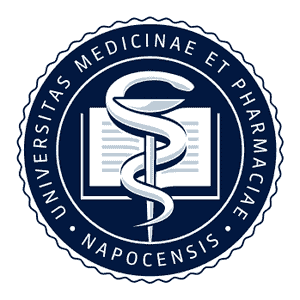
3. Grigore T. Popa University of Medicine and Pharmacy

4. Babes-Bolyai University
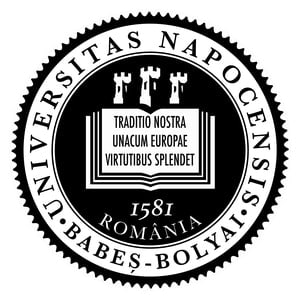
5. University of Bucharest

6. University of Medicine and Pharmacy of Craiova
7. university of medicine, pharmacy, sciences and technology of targu mures, 8. politehnica university of bucharest.
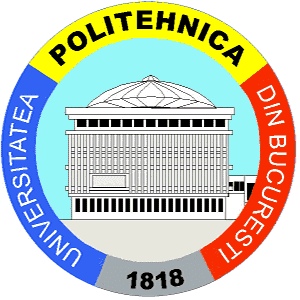
9. University of Agricultural Sciences and Veterinary Medicine of Cluj-Napoca

10. Alexandru Ioan Cuza University

11. Transilvania University of Brasov
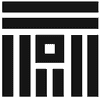
12. University of Oradea

13. Technical University of Cluj-Napoca
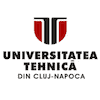
14. West University of Timisoara

15. University of Craiova
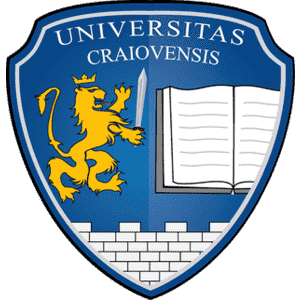
16. University Dunarea de Jos of Galati
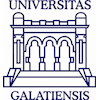
17. Ovidius University of Constanta
18. politehnica university of timisoara.

19. Stefan cel Mare University of Suceava
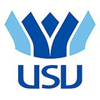
20. Bucharest Academy of Economic Studies
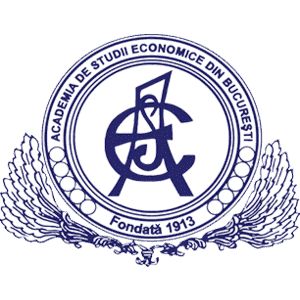
21. Lucian Blaga University of Sibiu

22. Banat University of Agricultural Sciences and Veterinary Medicine, Timisoara

23. University of Agronomical Sciences and Veterinary Medicine

24. Titu Maiorescu University

25. University of Pitesti
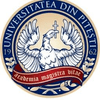
26. Aurel Vlaicu University of Arad

27. Sapientia Hungarian University of Transylvania
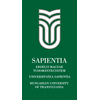
28. Spiru Haret University
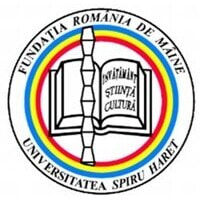
29. National School of Political Studies and Public Administration

30. Technical University of Civil Engineering of Bucharest

31. Petre Andrei University of Iasi
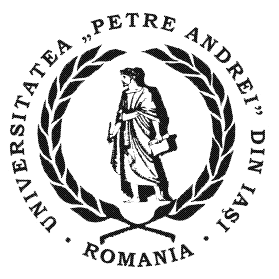
32. Romanian-American University

33. Dimitrie Cantemir Christian University
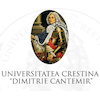
The best cities to study Medicine in Romania based on the number of universities and their ranks are Bucharest , Cluj-Napoca , Iasi , and Craiova .
Medicine subfields in Romania
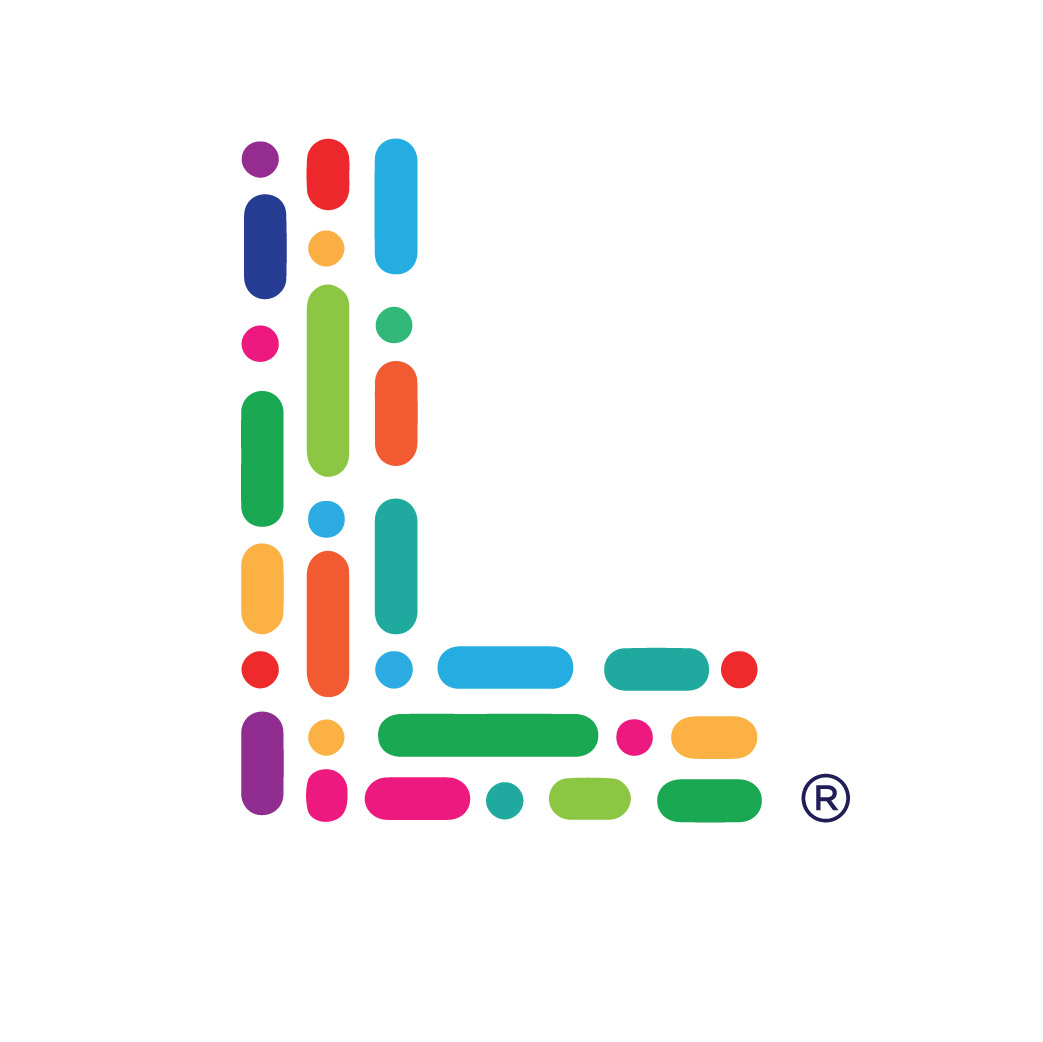
- Health Science
- Nursing & Pharmacy
- Allied Health
- Privacy Policy
- Cookies Policy
- Advertise With Us

Trending Now
A guide to studying medicine in romania for international students.
- Share on Facebook
- Tweet on Twitter

OVERVIEW
Entry requirements .
- The entry requirements differ slightly depending on the university.
- A-Level Chemistry and Biology are the required subjects.
- If you are a non-native English speaker you will have to prove your English proficiency by taking IELTS or TOEFL.
- Or you can sit an exam issued by the university around June or July time.
- You will need to know how to speak Romanian by the 4 th year of your studies, as you will be required to work directly with Romanian patients who might not know how to speak English.
ENTRANCE EXAM
Application procedure .
- A copy of your passport
- A copy of your birth certificate
- Your academic records
- Proof of your health
- Personal statement
- Letter of recommendation
- Proof of your English proficiency
APPLICATION DEADLINE
Fees for international students , scholarships available for international students .
- The Romanian Government Scholarship is available for extraordinary non-EU students studying for a bachelor’s or a master’s degree in Romania.
- The recipient of the scholarship will not have to pay the tuition fees or any other costs that might be required when applying to university.
- Your dorm costs will be covered.
- You will also get to study Romanian for a year, free of charge.
- You will also get £54 a month if you are studying a bachelor’s course and £62 a month if you are studying for a master’s degree.


Study Abroad Aide
The Best Study Abroad Site

10 Best Medical Schools in Romania
Romania is usually not the first choice amongst many students – but it should be. After all, the country offers high-quality education at a price that’s cheaper compared to the rest of Europe. This is especially true for aspiring doctors, as Romania’s medical schools are on par with the rest of the continent. They teach in a couple of languages too, which are good for English or French-speaking students.
How long does it take to study in Romanian medical schools?
The Romanian medical program is a 6-year undergraduate course. It covers 3 years of basic education, followed by 6 years of clinical studies.
What are the application documents required in medical schools in Romania?
The basic requirements are a high school diploma and transcript of records. Other necessary documents include a copy of your passport, birth certificate, and a marriage certificate if applicable. A medical certificate may be required as well.
Top Medical Schools in Romania
1. carol davila university of medicine and pharmacy – faculty of medicine.
Also known as the University of Medicine and Pharmacy Bucharest, this public health science institution is one of the oldest in Romania. It was established as St. Sava College in 1694 before it became UMFCD in 1857. Its Faculty of Medicine was opened a decade after in 1867. Carol Davila University of Medicine and Pharmacy is considered the best medical school in Romania.
The medical curriculum, which is taught in English, is divided into 2 parts: pre-clinical and clinical education. The first department covers studies in the functional, morphological, and complementary sciences.
As for clinical education, different departments are tasked to teach the courses in medical semiology, infectious disease, internal medicine, clinical neuroscience, pediatrics, radiology, rehabilitation medicine, surgery, ophthalmology, orthopedics, ENT, and obstetrics & gynecology.
The university only accepts 300 applicants every year.
2. Grigore T. Popa University of Medicine and Pharmacy – Faculty of Medicine
Grigore T. Popa University of Medicine and Pharmacy is a public medical school located in Moldavia. Popularly known as UMF Iași, it was established in 1979. It is currently recognized as an advanced research and education university.
The university offers a 6-year medical program in English, French, and Romanian, which cost 5000 EUR a year for international students. Given the school’s strong international academic positioning, admission is competitive with slots limited to 200 per year.
The 360-credit course is complimented by immersions in laboratories, research centers, and university hospitals. Clinical rotations are done in the departments of pediatrics, obstetrics & gynecology, dermatology, surgery, psychiatry, family medicine, and public health, to name a few.
International mobility programs are available for students as well.
3. Iuliu Hațieganu University of Medicine and Pharmacy – Faculty of Medicine
Iuliu Hațieganu University of Medicine and Pharmacy or UMF Cluj is a state medical school in northwestern Romania. Founded in 1919 as the Superior Dacla University, it is considered one of the more prestigious institutions in the country.
UMF Cluj’s Faculty of Medicine is the only Romanian medical school to be recognized by the Association of Medical Schools in Europe. It is also the only Romanian medical faculty to be accredited by the Ministry of Health of the State of Israel. Add to that, it is a recipient of the Quality Certificate from the National Conference of the Francophone Faculties of Medicine.
The English curriculum covers fundamentals such as Anatomy, Biophysics, Physiology, Histology, Semiology, and Pharmacology, to name a few. By the end of the 3rd year, students are required to undergo practical work at Cardiology Rehabilitation Institute.
Clinical education includes immersions in cardiovascular surgery, internal medicine, and pediatrics, to name a few.
4. University of Medicine, Pharmacy, Science, and Technology of Târgu Mureș
Known to many as UMFST, it was founded in 1945. Based in Târgu Mureș, Romania, it is known as one of the 6 traditional medical schools in Romania.
UMFST is one of the newest institutions to offer a Medicine degree in English. Like most universities, the program is divided into the pre-clinical and clinical phases. Foreign students are required to take Romanian lessons as part of their studies.
UMFST remains a popular choice amongst many applicants as it is one of the few schools to provide a scholarship for international students. This is outside the 3 slots open for young researchers.
5. Victor Babeș University of Medicine and Pharmacy
Popularly called UMF Timișoara, the university is a public institution established in 1945. It is named after Victor Babeș, one of the founders of modern microbiology.
It is one of the few medical schools to offer the course in 3 languages: English, French, and Romanian. The slots are quite limited though, as there are only 15 available for the English program and 30 for the French course.
The pre-clinical cycle covers subjects in anatomy, biology, histology, biophysics, and biochemistry. Unlike other universities, this phase also includes practical courses in neuroscience and first aid.
The clinical phase, meanwhile, focuses more on the medical and surgical disciplines. True to its goal of making well-rounded physicians, the curriculum also includes lessons in the social sciences, sports, and foreign languages.
6. Transilvania University of Brașov – Faculty of Medicine
Next in our list of best medical schools in Romania is Transilvania University of Brașov, also known as UNITBV. This university is the biggest institution in central Romania. It is home to 18 faculties, with an enrollment number of 19,500 local and foreign students. While it was founded in 1948 as the Institute of Silviculture, the university was only formally founded in 1971.
Its Faculty of Medicine was established in 1991, a score after the university’s establishment. Unlike other universities, it only offers a Romanian-taught medical program.
The objective of the course is to help mold doctors with basic and specialized knowledge of Medicine. It integrates lectures and theoretical lessons into practical clinical competencies in different medical fields.
7. Ovidius University of Constanța – Faculty of Medicine
The Ovidius University of Constanța is a public educational institution located in Romania’s oldest inhabited city. Founded in 1961, it is named after the Roman poet Publius Ovidius Naso who lived in Constanța some 2,000 years ago.
Its Faculty of Medicine was founded in 1990 as the Faculty of General Medicine, Dentistry, and Pharmacy. In 2002, the administration was divided into two departments. The medical school is currently housed in the campus’ building B, which was constructed in 2008.
Ovidius University offers a medicine program in both Romanian and English, the latter of which was first launched in 1993. It is one of the more popular courses in the university, as it hosts 800 students – compared to the 200 students enrolled in the Romanian course.
Medical students take the most of the international assembly, as the school is currently home to 1,100 students from India, South Africa, Israel, Albania, and Turkey, to name a few.
8. University of Medicine and Pharmacy of Craiova – Faculty of Medicine
UMF Craiova is a public educational institution situated in southwestern Romania. It was initially part of the University of Craiova before it was formally separated in 1998.
The Faculty of Medicine is one of the university’s 4 departments. This Romanian medical school is guided by the mission of providing more than just medical training, but scientific research as well.
The faculty is comprised of 15 departments that are manned by 300 physician-teachers. Unlike other universities, it has quite a big student population. After all, it accepts 1,500 applicants every year.
Each academic year is divided into 2 semesters, with each spanning 15 weeks long. The program follows a structured curriculum, with evaluations done through written and oral examinations.
9. Vasile Goldiș Western University of Arad – Faculty of Medicine
The Vasile Goldiș Western University of Arad, also known as UVVG Arad, is a private university based in Western Romania. Founded in 1990, it is named after Vasile Goldiș, a prominent Romanian figure.
It has 6 faculties, one of which is the Faculty of Medicine. Of the many Romanian universities, it is one of the few to offer courses in both English and Romanian. The 6-year medical program is designed to be student-centered, and one that aims to promote the concept of “Medicine without borders”.
Apart from the mandatory fundamental, complementary, and specialty subjects, the university also offers unique study options. Such courses include legislation for foreigners, complementary therapies, even Chinese Traditional Medicine and Vitalopathy.
The internship for the last year includes rotations in 11 departments, including family medicine, infectious disease, obstetrics & gynecology, and emergency care, to name a few.
10. University of Oradea – Faculty of Medicine
The final candidate in our list of top medical schools in Romania is the University of Oradea, a public institution founded in 1990. It is located in its namesake town, which is situated in the northwestern region of Romania.
It is one of the Romanian universities to offer an English Medicine program for international students. The program is governed by the Faculty of Medicine, which was established in 1991. It has 2 strategic objectives, which are to provide vocational education for physicians and to promote scientific research in the medical field.
The pre-clinical phase covers the fundamental, domain, specialty, and complementary disciplines. As for clinical education, the subjects range from compulsory to optional – both of which are vital to the student’s assumption of a professional role.
I hope that this article was helpful. If you are interested, visit the Europe Scholarships Page.
Leave a Reply Cancel reply
Your email address will not be published. Required fields are marked *
Save my name, email, and website in this browser for the next time I comment.
Courses by Degree
- Undergraduate
- Master’s
Courses by Country
- United Kingdom
Courses by Subject
- Computer Science
- Data Science
- Hospitality and Tourism Management

Who Are We?
Mediceu: your bridge to medical education in romania.
MedicEU began as a dream, a vision to bridge the gap between aspiring medical students and the world-class educational institutions of Romania. Our foundation was built on the belief that every student, regardless of their geographical location, should have access to top-tier medical education. Over the years, our mission has been unwavering: to simplify the journey for international students seeking a medical degree in Romania. At the heart of MedicEU is a deep-seated passion and dedication. We don't just guide students; we walk with them, understanding their aspirations, and turning them into tangible realities. Our commitment is evident in the countless success stories of students who, with our guidance, have embarked on rewarding medical careers in Romania and beyond.
To be the leading bridge connecting international students to Romania's world-class medical institutions, ensuring every student realizes their dream.
Our Mission
To provide unwavering support, guidance, and resources to international students, ensuring a seamless transition to medical education in Romania.
Integrity, Dedication, Excellence, and Passion for transforming students' aspirations into successful medical careers.
Our Core Values
What drives mediceu forward every day., expertise in education.
With deep insights into Romanian medical education, we offer tailored guidance for every student's journey.
Transparent Processes
We prioritize clarity in all our processes, ensuring students make informed decisions at every step.
Dedicated Support
Our team is about genuine care. We're here to guide and support every student's transition.
Global Recognition
Our partnerships ensure students receive education that's globally recognized and respected.

What Makes Us Different?
We bring comprehensive solutions to ensure our students' success., holistic approach.
We ensure your overall well-being and success in your academic journey.
Innovative Support
From city guidance to learning materials, we've got you covered.
Complete Service
We assist with housing, books, and more to ensure a smooth transition.
Dedicated Guidance
Our team supports and guides you every step of the way.
We use cookies to personalize content and ads, to provide social media features, and to analyze our traffic. We also share information about your use of our site with our social media, advertising, and analytics partners who may combine it with other information that you’ve provided to them or that they’ve collected from your use of their services. By clicking 'I Agree,' you consent to our cookies if you continue to use our website. If you do not agree, you can choose to discontinue using our site.
Medical education in Romania: Tradition and innovation
Affiliations.
- 1 a University of Medicine, Pharmacy, Science and Technology of Târgu Mureş, Romania , Department for the Internal Evaluation of Programs of Study and University Curriculum.
- 2 b Gulf Medical University , Ajman , United Arab Emirates.
- PMID: 30661485
- DOI: 10.1080/0142159X.2018.1552932
Romania is a country in south-east Europe, which has experienced major changes in political, educational, and healthcare systems. At the time of writing this paper, there are thirteen accredited Faculties of Medicine, which offer students from all over the world the possibility of becoming doctors. Students in Romania follow a six-year program of activity and there are courses taught in Romanian, English, French, and Hungarian. In this paper, we outline the organization of Romanian medical education at undergraduate and postgraduate levels and we indicate the opportunities for curriculum development.
Publication types
- Research Support, Non-U.S. Gov't
- Delivery of Health Care / organization & administration
- Education, Medical / organization & administration*
- Education, Medical / standards
- Educational Measurement
- School Admission Criteria

5 Best medical schools in Romania For International Student
Before we look at the list of the best medical schools in Romania based on their research, let’s go over some important information.
Studying medicine in Romania, one of Europe’s oldest countries, is a great choice. You get top-quality education, a rich cultural background, affordable living costs, and a diploma recognized worldwide.
The medical program lasts for six years. The first three years focus on the basics of medicine, and the next three years are about practical training.
There’s also a Preparatory Year program available, which helps you adjust to life in a new place and get ready for university. It’s a good idea because it prepares you for the culture, studies, and being away from your family and friends.
International Students who have always have an interest to study medicine in China can visit my previous post on Medical Universities in China .
Table of Contents
What is the duration of study in Romanian medical schools?
In Romania, the basic medical program usually goes on for 6 years. It starts with 3 years of foundational education and then continues with 6 more years of clinical studies.
What are the necessary application documents for medical schools in Romania?
To apply to medical schools in Romania, you’ll need a high school diploma and your school records. You should also provide copies of your passport, birth certificate, and marriage certificate if it applies to you.
You might need a medical certificate too. Besides that, you must show that you’re good at either English or Romanian. You can do this by giving your scores from tests like TOEFL or IELTS, or by taking a language test given by the university.
Overview of Best medical schools in Romania
1) ovidius university constanta.
Ovidius University, close to the Black Sea, is Europe’s biggest university with many different courses. It started in 1961 and has more than 15,000 students, including 1,200 from other countries. The university is approved for medical studies by the GMC and offers dentistry and medicine programs.
The Faculty of Medicine, which gets government funding, was set up in 1990 as part of Ovidius University. In the beginning, it covered General Medicine, Dentistry, and Pharmacy.
Now, there are over 200 international students in this faculty. Most of them come from countries like India, Sri Lanka, Norway, Denmark, Sweden, France, Greece, Nigeria, Cameroon, Egypt, United Arab Emirates, Lebanon, Morocco, and Syria, among others.
2) University of Oradea
The University of Oradea, also called UO or U of O, is a well-known public university in a city called Oradea in north-western Romania. It’s a respected place where students can study many different subjects.
The Faculty of Medicine at this university started in 1991, and you can find it at Piata 1 Decembrie 10. This faculty has two parts: one for students from Romania, and another for students from other countries. The part for international students teaches all its classes in English, so students from abroad can learn medicine here.
The medicine program at this faculty takes six years and was created with the help of Harvard University and some other universities in the United States. They teach in both Romanian and English. The faculty is proud to have six hospitals where students can learn about general and specialized medical care, and these hospitals have a total of 2,987 beds. Right now, there are more than 500 students from all around the world studying here.
3) Transilvania University of Brasov
Transilvania University, also known as UNITBV or UniTBv, is a well-respected place for higher education and research in Brașov, Romania. It’s especially known for its excellent medical school.
The Faculty of Medicine, which is a part of Transilvania University of Brasov, started and got approval from the government in 2002. This faculty offers three bachelor’s degree programs: Medicine, General Nursing, and Physical-kinetic therapy. It also has three master’s degree programs: Management of Nosocomial Infections, Preventive and Public Health Strategies, and Palliative Care Strategies.
The faculty is focused on giving students a good education, research opportunities, and helping them become critical thinkers. They have modern facilities, experienced teachers, and a comprehensive curriculum. That’s why many students in Romania and from other places want to study at the Faculty of Medicine in Transilvania University of Brasov.
4) Carol Davila University of Medicine and Pharmacy
The Carol Davila University of Medicine and Pharmacy, also known as the University of Medicine and Pharmacy Bucharest, is a big school for health sciences in Bucharest, Romania. It’s one of the oldest and largest of its kind in Romania and known for being one of the best medical schools in the country.
The university works with more than 20 hospitals in Bucharest, which is great for students studying medicine.
The Carol Davila University is known as an important place for research and education, according to the Ministry of Education. It was created in 1869 as part of the University of Bucharest and is considered one of the top universities in Romania and Eastern Europe. People think it’s really good because it gives students a good education, does new and creative research, and helps students learn how to think critically.
5) University of Medicine and Pharmacy Craiova
The University of Medicine and Pharmacy in Craiova, also known as UMF Craiova, is a college in the city of Craiova, which is in the southwestern part of Romania. People consider it one of the best medical schools in Romania.
The Faculty of Medicine at this university is well-respected in Romania’s medical education system, and it’s also known internationally. The faculty is focused on being separate from politics, meaning it doesn’t get involved in political matters. They make sure that their academic and administrative functions are clearly separate, but they still work together.
This university is known for offering medical programs in English. A lot of international students like it because they can study medicine in English for six years, and there’s also a two-year English Master’s Degree Program in Medical Informatics and Biostatistics. To get in, you don’t need to take an entrance exam; they select students based on their application.
The Faculty of Medicine has 15 departments and offers more than 77 courses. They have over 1,500 students enrolling each year, and their teaching team includes more than 300 educators.
Author Profile

Latest entries

Leave a Reply Cancel reply
Your email address will not be published. Required fields are marked *
Save my name, email, and website in this browser for the next time I comment.
Recent Posts
- 10 Best Online Universities In The World
- 7 Nursing Schools In USA With Scholarships
- Top 8 Film Acting Schools in Los Angeles
- Scholarships For African Students In Germany
- Requirements to Study Medicine in Canada for International Students
MBBS in Romania 2024-25: Admission, Courses, Fees, Top collages etc.
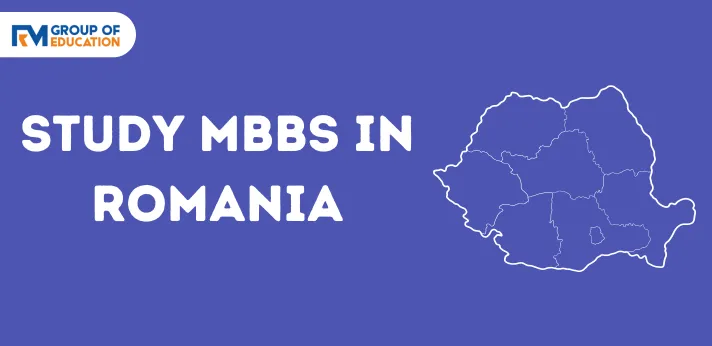
Romania offers some of the finest MBBS colleges globally, with almost every university accredited by prestigious organizations like WHO, UNESCO, and NMC. This recognition makes Romania an excellent choice for studying MBBS. Moreover, Romania’s serene and picturesque environment makes it highly appealing to international students.
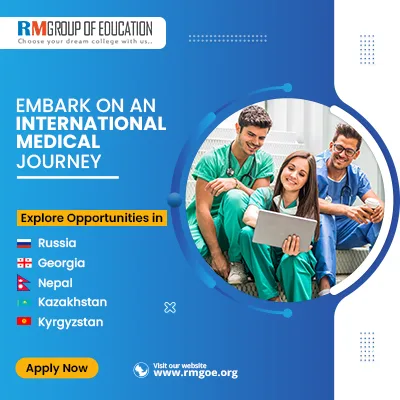
Pursuing MBBS in Romania is gaining popularity among Indian medical aspirants seeking to fulfill their dream of becoming doctors. Whether you’re determined to achieve your goal or seeking in-depth knowledge, studying in Romania is a growing trend in the field of medical education.
Subscribe to RM Group of Education Newsletter, Get Admission, Fees, Seats etc.
Country Summary
Romania, located in southeastern Europe, is renowned for Transylvania’s wooded area, encircled by the Carpathian Mountains. It shares borders with the Black Sea to the southeast, Bulgaria to the south, Ukraine to the north, Hungary to the west, Serbia to the southwest, and Moldova. With nearly 20 million inhabitants, Romania ranks as the 12th largest country and the 7th most populous member of the European Union.
Quick Facts
Before reading the complete information about MBBS in Romania, let’s look at Quick facts.
Courses offered in Romania:
The most popular fields of MBBS in the medical universities/colleges of Romania are listed below:
Why Study MBBS in Romania?
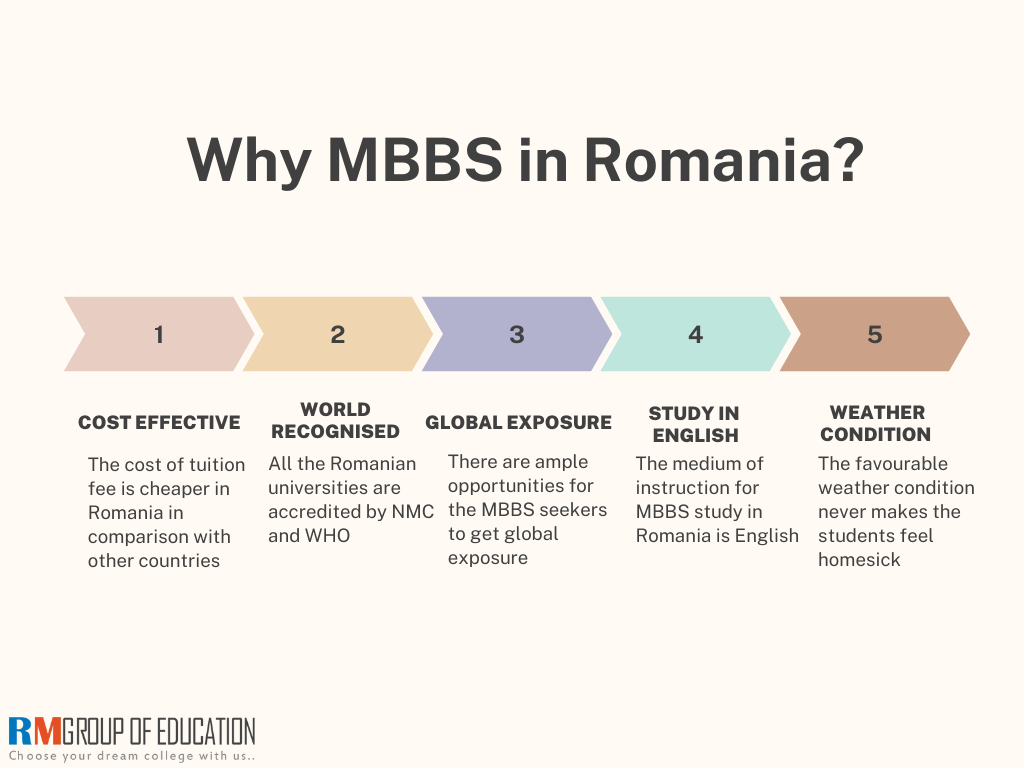
Eligibility Criteria
MBBS in Romania has been one of the top preferred destinations for international students to pursue their Medical Degree Courses. If you too want to study MBBS in Romania, check the eligibility below.
Graphical Representation of Eligibility Criteria
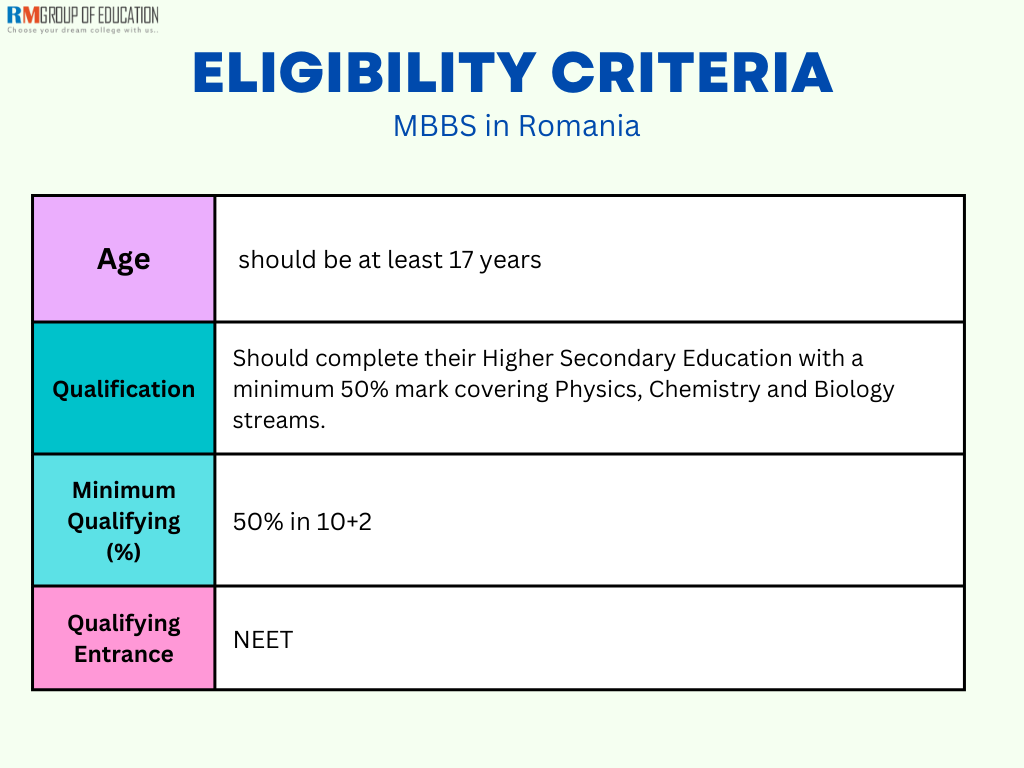
Admission Procedure
If you want admission to Romania, you must qualify for the National Eligibility Entrance Exam (NEET). One must remember that you only have to be eligible for the exam. Here are the valuable resources for NEET Exam that will help you boost preparing for the NEET exam.
Documents Required
Before admission to Medical college Romania, please do not forget to carry all these related documents. Passport (Minimum 18 months validity).
- Birth Certificate. 10th Certificate & Mark sheet.
- 12th Certificate & Mark sheet.
- Ten passport size Photographs
- Official Invitation letter from the Medical University of Romania.
- Authorization of all documents from the Ministry of External Affairs, New Delhi.
- Legalization of all documents from the Romanian Embassy.
- Bank receipt of University 1st year Tuition fee (required for some Universities).
- Medical test documents.
MBBS Syllabus in Romania
Before going to Romania for Medical, studies compare the MBBS in the Romania Syllabus of some of Romania’s top-ranked, NMC-approved medical universities.
Recognition of Romania Medical College
Checking the affiliation, recognition and other affiliating parameters are the most critical factors that decide good and the best medical college. Medical colleges in Romania are affiliated with these authorities.
- Ministry of Education, Romania.
- WHO (World Health Organization)
- ECFMG (Educational Commission for Foreign Medical Graduates)
- WFME (World Federation for Medical Education)
- FAIMER (The Foundation for Advancement of International Medical Education and Research)
MBBS Colleges in Romania
Below is the updated 2023-24 of all Medical or MBBS Colleges in Romania officially made by India’s Medical Council.
Fee Structure
Here in this section, we provide information about the MBBS in Romania Fee structure of the MBBS program . Let’s have a look.
NOTE: The mentioned fee is approximate and will be subject to change.
Scholarships in Romania
Even Romanian universities provide scholarships to overseas students. Scholarships will be made available to candidates through bilateral cooperation agreements. This benefit will be granted to candidates depending on their performance during their Medicine Studies in Romania. Students pursuing an MBBS degree will get a monthly scholarship of $50 USD. Furthermore, the cost of school is waived for those awarded a scholarship. The scholarship does not cover the cost of overseas transportation or personal expenditures. The Ministry of Foreign Affairs also offers scholarships to students. Romanian students apply for scholarships to the Departments for Romanians Abroad.
Advantages and Disadvantages of Studying MBBS in Romania
Romania ranks in the 5th position in the all-time medal count at the International Mathematical Olympiad, with 316 total medals dating back to 1959. Romania has achieved the highest team score in the competition, after China and Russia, and right after the United States and Hungary.
Advantages of Studying MBBS in Romania
- No Entrance test is required to study in Medical Universities in Romania (Only NEET Qualification is enough).
- No capitalization fee.
- The Indian students seeking admission are admitted to those recognized by the medical council of India for screening tests conducted by NMC.
- Wide range of possibilities and broad exposure to clinical practice due to highly equipped multi-profile hospitals.
- Colleges in Romania don’t ask for any donation at the time of admission.
- The tuition fee is relatively low and affordable.
- Elite bodies like WHO and NMC acknowledge medical colleges in Romania.
- The cost of living for students is relatively low too.
Disadvantages of studying in Romania
- One might have to put extra effort into learning the Romanian Language after the class hour.
- The entire Visa process for Romania can be callous as it can take more than two months after document submission to the concerned embassy.
- The climate of the country is cold most of the time. Therefore, it might be hard for some students to adapt.
- Those who wish to study and work together to cover their expenses may face difficulties because it requires self-study and concentration.
Frequently Asked Questions (FAQs)
Is romania good for medical studies.
Romania is well-known for providing world-class education at a very considerable cost.
Why is MBBS cheap in Romania?
The cost of pursuing MBBS in Romania is low because the Romanian government provides subsidies for education.
Can poor Indian students study abroad?
Of course, there is no rich and poor when it comes to education; it is all about knowledge. Several scholarships are open to students, and the government of India also provides a scholarship option for academically intelligent students.
Leave a Comment Cancel reply
Save my name, email, and website in this browser for the next time I comment.
Get Admission to Abroad Colleges with up to 100% Scholarship.
- April 2024 20th Apr 2024

- Company Profile
- Our Mission
- Academic Advisors
- Local Support – Armenia
- Local Support – Georgia
- Local Support – Ukraine
- Local Support –Serbia
- Local Support – Romania
- Local Support – Bulgaria
- Corporate News
- Our Articles
- Graduate Entry
- Costs & Fees
- Our Offices
- Partner Universities
- Authorised Recruiters
- Our Distinguished Supporters
- Our Students
- Entry Exams
- Networking Events
- Social Events
- Undergraduate Entry
- Commonwealth University
- University of Health Sciences Antigua
- Victoria University of Barbados
- Saint James School of Medicine
- National and Kapodistrian University of Athens
- Aristotle University of Thessaloniki
- University of Crete
- “Grigore T. Popa” University of Medicine and Pharmacy – Iasi
- “Vasile Goldis” Western University of Arad
- Sofia University “St Kliment Ohridski”
- Trakia University – Stara Zagora
- Burgas University “Prof. Dr. Asen Zlatarov”
- Sofia Medical University
- Plovdiv Medical University
- Varna Medical University
- Pleven Medical University
- University of Belgrade
- University of Traditional Medicine
- East West Teaching University
- New Vision University
- Caucasus International University
- Georgian National University
- Ivane Javakhishvili Tbilisi State University
- Trakia University – Stara Zagora
- Forestry University – Sofia
- Join Our Open Days & Win A Scholarship
- Sofia University ‘St Kliment Ohridski’
- Trakia University Stara Zagora
- Forestry University Sofia
- Student Loans
- Scholarships
- Student Loans for Medical Studies in Europe
- Medical School Scholarships in Europe
- Study in Armenia
- Medical Education in Armenia
- Medical School Programme
- Dental School Programme
- Medical Postgraduate Study
- Tuition Fees in Armenia
- Medical University Requirements
- Application Deadlines
- Application Documents
- Medical School Acceptance Letter
- Medical Student Transfer
- Medical School Accreditation
- Living Costs in Armenia
- Student Accommodation
- Student Loans in Armenia
- Armenian Student Visa
- Student Residence Permit
- Medical Insurance
- Medical Student Life
- Weather Conditions
- Transportation in Armenia
- Safety and Security in Armenia
- Study in Georgia
- Medical Education in Georgia
- Tuition Fees in Georgia
- Living Costs in Georgia
- Scholarships in Georgia
- Student Loans in Georgia
- Georgian Student Visa
- Transportation in Georgia
- Safety and Security in Georgia
- Study in Serbia
- Medical Education in Serbia
- Tuition Fees in Serbia
- Living Costs in Serbia
- Scholarships in Serbia
- Student Loans in Serbia
- Serbian Student Visa
- Transportation in Serbia
- Safety and Security in Serbia
- Study in Romania
- Medical Education in Romania
- Veterinary School Programme
- Tuition Fees in Romania
- Living Costs in Romania
- Scholarships for Romania
- Student Loans in Romania
- Romanian Student Visa
- Transportation in Romania
- Safety and Security in Romania
- Study in Bulgaria
- Medical Education in Bulgaria
- Postgraduate Medical Study
- Tuition Fees in Bulgaria
- Living Costs in Bulgaria
- Scholarships in Bulgaria
- Student Loans in Bulgaria
- Bulgarian Student Visa
- Transportation in Bulgaria
- Safety and Security in Bulgaria
- Getting There
- Ongoing Support
- 24/7 Information Availability
- Academic Advice & Skills Assessment
- Complete Information Packages
- Official University Representatives
- Docs Legalization & Translation
- In-Person Application Submission
- Application Tracking & Reports
- Entry Tests Prep Courses & Materials
- Information and Support from Day 1
- Online Lessons, Notes & Sample Tests
- Scholarships & Bursaries
- Student Loans & Grants
- Student Visa Issuance (If applicable)
- Arrival Services, Escorting & Lodging
- Annual Open Days (Pre-departure)
- Orientation, Support Meetups Abroad
- Finding Accommodation & Amenities
- Residence Permit
- University Course registration
- Open a Local Bank Account
- Emergency Support Until Graduation
- Ongoing Academic Support
- Online Tutoring
- Bi-Monthly Follow Ups
- Postgraduate Support Webinars
- Clinical Work Experience in the UK/USA
- License to Practice in the UK
- License to Practice in the USA
- Job Seeking Support
- Career Fairs with UK/USA Employers
- Belgrade University
- Pleven University
- Trakia University
- Kiev Medical University
- Pleven Medical university
Postgraduate Medical Study in Romania
Home Medical Postgraduate Study

Click here to view
Scholarships requirements.
- Real Success Stories
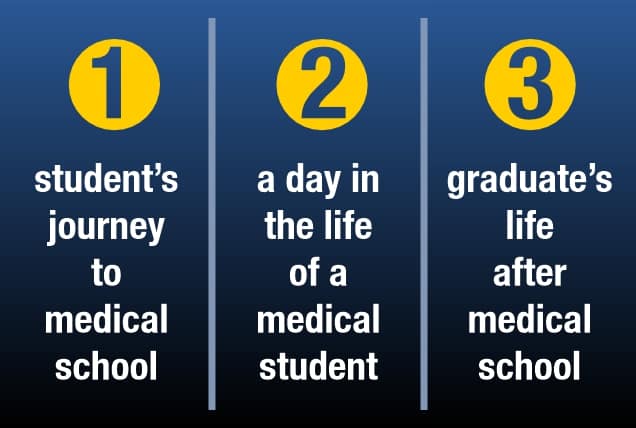
Click to view
Our real success stories.
- New Student
- Current Student
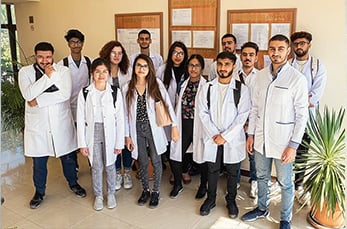
- March Intake
- September Intake
All Romanian Medical Universities offer postgraduate medical programmes for EU and non-EU medical graduates.
What are the Benefits of Postgraduate Training for Medicine Students in Romania
Postgraduate medical study focuses on the acquisition of a medical specialty (or residency) and covers theoretical and practical training, according to the approved EU and national training curricular guidelines for the respective specialty. Depending on the specialty, training usually lasts 4-6 years and takes place at medical university affiliated hospitals and clinics exclusively offering postgraduate-level medical practice, under the guidance of a residency coordinator or the director of the university hospital.
Upon completion of the residency specialisation training program, students have to sit for a written and clinical practice exam, upon successful completion of which, the Ministry of Health issues a certificate of completion of the respective specialty. Most medical graduates of Romanian medical universities, whether Romanian, EU citizens or non-EU citizens, prefer to continue with their specialisation in Romania, either due to the availability of funding (EU citizens) or the low cost of living in Romania or both.
What Languages are the Postgraduate Medical Study Programmes in Romania Taught in
Note that it is imperative by this time that all foreigners (EU and non EU candidates) should have at least some competency in the Romanian language or take a 9-month preparatory course culminating with a Romanian language exam (B2 level in the EU framework) usually at a University, in order to be able to communicate with patients they treat in hospitals, as is the case in any country that a medical professional seeks specialisation whose native language is not the one spoken.
Successful EU candidates have to register directly with the Ministry of Health Directorate, while non-EU candidates apply to the Ministry of Education, and subsequently the Ministry of Health approves their registration.
How do Students Prepare for their Postgraduate Residency Study in Romania
Every year, the Ministry of Health allocates a certain number of positions for EU candidates (including Romanians) and Non-EU candidates. It publishes all available specialty vacancies in Medical University affiliated Hospitals and clinics as early as late August-Early September, and candidates can apply by early November. Eligible candidates are only medical graduates who have completed their undergraduate studies in Medicine within the last 5 years or else they do not have the right to practise medicine in Romania .
Generally speaking, EU candidates, including Romanians, are admitted to specialisation positions through an application as well as a mandatory residency examination process and subsequently must secure funding, but non-EU candidates are admitted through an application process as they are self-funded.
Non-EU students apply for a residency specialisation program by submitting all necessary documentation to the Ministry of Education, Research, Youth and Sports (MECI) and, in turn, it is the Ministry of Health that approves the specialty they have chosen to pursue. The fees that non-EU students pay range from 3,300 – 7,700 Euros a year.
What State Examinations must Students Complete when they Study Medicine in Romania
EU and Romanian students are admitted to residency specialisation programmes by participating at the end of November in a regional competition examination, organised by the Ministry of Health. Students need to submit their application documents to the directorate of the Public Health at the Ministry of Health. Sometimes, depending on position availability, the Ministry of Health may announce additional places for residency, thus organising a second residency exam session within March.
The regional competitions take place in only six medical universities: Iasi, Bucharest, Cluj-Napoca, Craiova, Targu Mures and Timisoara, and the results are published by the Ministry of Health. The local residency committees are responsible for organising and conducting competitions including the exam material and correction. The exam material is taken from bibliography approved by the Ministry of Health and the Ministry of Education, Youth and Sports, and includes 200 multiple-choice questions as well as 50 questions requiring only one correct answer, and 150 questions requiring 2-4 correct answers, depending on variables and per-case criteria or diagnoses.
The duration of the test is 4 hours and the minimum allowed passing score is 60%. After successfully passing the exam, and having begun their residency practice, candidates are entitled to receive a monthly salary ranging from 579 to 1,013 payable by the Romanian Government.
What are the Admission Requirements for Students to Study Postgraduate Medicine in Romania
Candidates’ application files should contain the following documents to ensure eligibility for the regional specialty residence exams:
- Application form, indicating the name of candidate as shown on ID card/passport, and father’s name and initial(s);
- Identity Card or Passport certified copy (pages that show the name of the candidate and date of birth);
- Certified copy of the Medical Diploma/Degree;
- A5 medical certificate stating that the candidate is physically and mentally healthy to continue with his or her residency;
- Receipt of 300 RON fee for participating in the exam;
- Certified photocopy of relevant documents (marriage certificates, etc.) as a proof of name-change if the candidate’s name has changed.
What if Students are Interested in a Second Specialty following Medicine Programme Study in Romania
EU or non-EU Students interested in receiving a second specialty in Romania will have to pay tuition fees after they submit their application documents, payable directly to the Ministry of Health in September for the first session, or in April for the second session.
Candidates’ application files should contain the following documents to ensure eligibility for the second regional specialty residence:
- Application form of license registration, indicating: full name, current employer and type of employment contract, current specialty, specialty for which registration is desired and contact number(s);
- Current employer should indicate on the candidate’s application for the second specialisation the address of the Public Health Unit, the candidate’s employment status, the specialty type, the university training centre, and the remuneration received for this period;
- Notice of registration issued by the Rector (or else the Dean) of the University Hospital’s training programme;
- Photocopy of the certificate of the undergraduate physician diploma/Degree;
- Photocopy of the certificate that the candidates is registered at the respective medical professional organisation;
- A5 Health medical certificate stating that the candidate is physically and mentally healthy to continue with his or her residency;
- Certified copy of identity card / passport;
- Photocopy of the relevant documents (marriage certificates etc) as proof of name-change, if the candidate’s name has changed;
- Commitment fee declaration (lists the tuition fee instalments and the dates these have to be paid) for the training programme of the second residency as approved by the joint order of the Ministry of Health and the Ministry of Education, Research, Youth and Sports.
The Medical and Dental Specialisations for Study in Romania are:

Subscribe to Our Newsletters
Sme referral programme, check out our brochure, excellent reviews.

- Privacy Policy
- Cookies Notice
- Cookie Policy (EU)
- Cookie Policy (UK)
- Cookie Policy (CA)
- Cookie Policy (AU)
- Opt-out preferences

Fill in your details:
Join our open days, 20th april 2024.
An official website of the United States government
The .gov means it’s official. Federal government websites often end in .gov or .mil. Before sharing sensitive information, make sure you’re on a federal government site.
The site is secure. The https:// ensures that you are connecting to the official website and that any information you provide is encrypted and transmitted securely.
- Publications
- Account settings
Preview improvements coming to the PMC website in October 2024. Learn More or Try it out now .
- Advanced Search
- Journal List
- Int J Environ Res Public Health

Burnout and Online Medical Education: Romanian Students in Lockdown and Their Residency Choices
Ioana silistraru.
1 Faculty of Social Sciences and Humanities, Lucian Blaga University of Sibiu, 550024 Sibiu, Romania; [email protected]
Oana Olariu
2 Faculty of Medicine and Pharmacy, Dunarea de Jos University of Galati, 800008 Galati, Romania; or.lagu.tneduts@501oo (O.O.); [email protected] (A.C.); [email protected] (A.P.C.)
Anamaria Ciubara
Ștefan roșca, ramona oana roșca.
3 Department of Chemistry, Physics and Environment, Faculty of Sciences and Environment, Dunarea de Jos University of Galati, 800008 Galati, Romania; [email protected]
Silviu Stanciu
4 SAIABA Department-BIOALIMENT Research Center, Faculty of Food Science and Engineering, Dunarea de Jos University of Galati, 800008 Galati, Romania; [email protected]
Alina Plesea Condratovici
Ioan-adrian ciureanu.
5 Medical Informatics and Biostatistics Department, Faculty of Medicine, Grigore T. Popa University of Medicine and Pharmacy, 700115 Iași, Romania; [email protected]
Associated Data
Data available on request from the corresponding author.
The primary aim of the study was to investigate the prevalence of burnout in Romanian medical students during the COVID-19 pandemic using the Maslach Burnout Inventory-General Survey for Students (MBI-GS(S)). The presence of burnout was assessed based on Exhaustion (EX), Cynicism (CY) and Professional Efficacy (PE) subscales. The secondary aim of the study was to identify the presence of intentional shift in medical specialty compared to their initial pursued choice within the population investigated. Data was collected online at the end of 2020 and beginning of 2021 through a licensed, customized MBI-GS(S) questionnaire from a sample of 126 Romanian medical students at the two leading medical schools in the country, Iasi (N = 56) and Cluj Napoca (N = 70). Descriptive statistics and bivariate correlations were also applied to describe the data set (age and gender of participants) and the relationship between variables (EX, CY, PE). Subsequently, the MBI-GS(S) group report revealed that 36.5% of the medical students in the sample (46) experienced burnout, with problematic results both in Exhaustion and Cynicism. Exhaustion and Cynicism, which contribute to burnout, showed high scores compared to the average scale (EX = 3.5/2.4; CY = 2.8/1.8), while the Professional Efficacy score was relatively high (PE = 3.8/4.4), showing a protective effect and burnout reduction. One of the main conclusions is that the consequences of burnout in medical students plays a significant role in shaping the future healthcare practitioners’ perception of the medical profession and of patients’ wellbeing. Exhaustion and Cynicism are mainly associated with depersonalization and disconnection from the patient. Another conclusion of the study is that about one third of the respondents (30% Cluj students and 37.5% Iasi students) considered changing residency options. The pandemic has also revealed the limitations of and challenges facing current medical education, and that further research is required to assess the trends in prevalence of burnout in medical students.
1. Introduction
Almost two years since the official announcement of the coronavirus pandemic, the sanitary crisis is still far from its conclusion. The impact of COVID-19 on all aspects of life is difficult to estimate. Stress, anxiety, and depression have been identified across professions, but healthcare workers present significant signs of burnout [ 1 , 2 , 3 , 4 ]. Recent research suggests that the coronavirus pandemic has hastened the mental health decline of certain professions at the forefront of the virus’s fight, particularly front-line healthcare professionals, but also medical students. Due to the COVID-19 pandemic, most countries have taken severe measures to limit the spread of infection, including in universities. Quarantine and social distancing have already had detrimental effects on people’s mental health, as symptoms of depression, anxiety, and stress have increased dramatically [ 5 ].
Most medical schools, due to the COVID-19 pandemic, have required curricular examination and restructuring [ 6 , 7 , 8 , 9 ], as well as significant changes in clinical rotations. Studies suggest that the mental health of medical students is significantly under strain, academic stress being the main predictor of burnout. Existing literature corelates educational burnout with emotional exhaustion. Educational challenges during COVID-19 lockdown are generally defined as perceived stress and pressure to face the tasks and student duties [ 10 , 11 ] mostly in an online environment, coupled with an increased workload.
Therefore, the impact of COVID-19 on mental health has led to legitimate concerns about students’ studies and progress during medical education. It was also found in a recent Australian [ 12 ] study that emotional exhaustion increased, especially in final year students, who struggled with a lack of clinical experience even before starting to work as resident physicians [ 13 , 14 , 15 , 16 ].
The concept of burnout has been used for almost 60 years [ 17 ], and it has been constantly developed and refined to evaluate the mental health of professionals and students. MBI has been developed as a multi-faceted research instrument, rather than an individual assessment tool [ 18 ] considered as the “gold standard” for assessing burnout [ 19 ]. The MBI-GS(S) provides group assessment on three subscales: Exhaustion (example scale item “I feel emotionally drained by my studies”), Cynicism, as loss of enthusiasm and passion for their studies (example scale item “I doubt the significance of my studies”) and Professional Efficacy, as feeling a low level of competence and achievement in academic areas (example scale item “In my opinion, I am a good student”).
According to previous studies [ 1 , 3 , 4 , 10 , 20 ], medical students suffer significant levels of stress throughout college, which is linked to the state of burnout. The Dyrbye study [ 21 ] conducted in seven American colleges revealed that 52.8% of medical students had burnout, which was associated with self-reported unprofessional conduct and less altruistic professional values.
Thus, with the COVID-19 pandemic and the profound shifts in private, professional, and social dynamics, burnout and stress in academia are receiving increased attention [ 22 , 23 ]. We aim to investigate the prevalence of burnout in Romanian medical students during COVID-19 pandemic using Maslach Burnout Inventory–General Survey for Students (MBI-GS(S)) on the Exhaustion (EX), Cynicism (CY) and Professional Efficacy (PE) subscales and the presence of intentional shift of residency choice. Thus, looking at how medical students navigate their education and how educational burnout is shaping the future of healthcare workers is of particular relevance [ 24 , 25 , 26 , 27 ].
2. Materials and Method
This cross-sectional study was conducted using an MBI-GS(S) customized online questionnaire to assess group prevalence of burnout in medical students from two major Romanian medical schools. The questionnaire was administered to a sample of 126 students, based on their availability, as the study was voluntary and anonymous. The representation of Romanian faculties of medicine consisted of Iasi (N = 56) and Cluj Napoca (N = 70). The customized questionnaire was used based on the permission letter obtained on 31 December 2020, by Oana Olariu, through Mind Garden. We compared the average population score in the licensed MBI Group Report with our sample scores regarding the burnout subscales Emotional Exhaustion, Cynicism and Professional Efficacy. We administered the licensed questionnaire in the original English language directly on the Mind Garden platform, as we determined that using English caused no particular difficulty or socio-cultural impediment for our sample group. Data collection was performed through a one-time available licensed questionnaire link, to ensure no duplicate answers were possible. The link to the questionnaire was sent through students’ representatives, providing the informed consent, informing respondents on the purpose of data collection and ensuring full anonymity and voluntary participation.
At the time the customized questionnaire was administered, the students had been taking online classes for almost a year (December 2020–June 2021).
The questionnaire included demographic questions such as age, gender, bachelor’s degree (BA), choice of medical specialty before the pandemic, intention of changing the specialty or profession altogether upon graduation.
The standard questionnaire was customized with additional items and open-ended questions to collect the relevant data concerning the intention to change the desired field of residency upon completion of all six years of medical school. The customized items of the questionnaire were placed after the items in the original instrument, to preserve the psychometric qualities of the instrument.
We used the MBI-GS(S) instrument to measure how frequently the students report Exhaustion, Cynicism and the perception of their level of Professional Efficacy during their studies in the pandemic context. As burnout is a severe problem affecting both students and healthcare workers, its prevalence and severity needs to be evaluated starting with academic studies. In this context, burnout is defined based on the subscales of Exhaustion, whereas students feel overwhelmed, stressed (example scale item “I feel emotionally drained by my studies”); Cynicism, as loss of enthusiasm and passion for their studies (example scale item “I doubt the significance of my studies”); Professional Efficacy, as feeling low level of competence and achievement in academic areas (example scale item “In my opinion, I am a good student”). The groups’ frequency average scores were measured on a Likert scale with responses structured as follows: 0—never; 1—a few times a year or less; 2—once a month or less; 3—a few times a month; 4—once a week; 5—a few times a week; 6—everyday in relation to Exhaustion, Cynicism and Professional Efficacy items.
The statistical analysis was performed with IBM SPSS Statistics v.26 for descriptive statistics and bivariate correlations.
Among all of the students (126), in the Cluj sample there were 32.9% (23) male students and 67.1% (47) female students, whereas in the Iasi sample there were 14.3% (8) male students and 85.7% (48) female students. For all students (126) reporting a BA degree, in the Cluj sample (70) there were 31.4% (22) in Mathematics, 47.1% (33) in Natural Sciences, 14.3% (10) in Philology and 7.1% (5) in Social Sciences, while in the Iasi sample (56) there were 48.2% (27) in Mathematics, 35.7% (20) in Natural Sciences, 8.9% (5) in Philology and 7.1% (4) in Social Sciences. Descriptive statistics are presented in Table 1 . Our study suggests that 36.5% of the medical students from Cluj and Iasi (N = 126) are currently experiencing burnout. Within the burnout profiles established through MBI-GS(S) scoring, 19 were Engaged, 22 Ineffective, 30 Overextended, 9 Disengaged and 46 Experiencing Burnout.
Descriptive statistics for participant demographics and relationship to “desired residency” variable.
Only 15.07% (N = 9) of the students with the Engaged profile scored well on all three scales, low on Exhaustion and Cynicism, and high on Professional Efficiency. The profile of Ineffective was scored by 17.46% (22) students, 23.8% (30) were Overextended and 7.14% (9) met the Disengaged profile.
The split subscales of EX, CY and PE scored as follows: for Cluj students, the Cronbach reliability score was α = 0.935 (EX), α = 0.841 (CY), α = 0.845 (PE), whereas for Iasi students, the Cronbach reliability score was α = 0.921 (EX), α = 0.744 (CY) and α = 0.748 (PE). The Cronbach α shows a high reliability for all subscales, as a measure of high internal consistency of the measured items within the group.
Table 1 presents the demographic factors and data regarding the shift in residency options. Among Cluj medical students, 30% (21) claimed that they will pursue a different residency option from the one they initially desired: 13 students with desired clinical residency (3 male and 10 female students) are prepared to change to surgical residency (1 female student) and 12 students will change their option to other clinical residency programs (3 male and 9 female students). Where the first residency option is surgical, 8 students (six male and 2 female students), the students would now rather pursue a clinical residency now (5 students, 3 male and 2 female students) or a different but still surgical residency (3 male students).
In the second group, 37.5% (21) of the Iasi medical students claimed they will also change their initial residency option as follows: 18 students (one male and 17 female students) will change from clinical to surgical (two female students) and 16 students (one male and 15 female students) to a clinical residency different from the one initially desired. Whereas, if the initial option was for a surgical residency, three Iasi students (one male and 3 female) will pursue a clinical residency upon completion of medical studies.
While changing residency option is not unusual during medical studies [ 14 , 15 ], we aimed to assess whether medical students were keener to do so after migrating to online education during lockdown. A further mixed-methods study could analyze whether there are relevant data to corelate the perceived quality of medical education to the desire to change residency choice.
3.1. Burnout Subscales and Item Reliability
The subscales measured within the sample demonstrated a good reliability on the three categories EE, CY and PE, as shown in Table 2 . For the Cluj student sample, the Cronbach reliability score for the measured dimension EE was α = 0.935, CY was α = 0.841 and PE α = 0.845. For the Iasi student sample, the Cronbach reliability score for EE was α = 0.921, for CY α = 0.744, and for PE α = 0.748. When considering the sample size and the scores α scores above 0.7, it can be concluded that the measured dimensions of burnout have good internal validity.
Descriptive statistics of burnout subscale scores EE, CY and PE split by sample (Cluj and Iasi medical students).
3.1.1. Emotional Exhaustion
In our sample, the group score on Exhaustion is 3.5 compared to a cut-off group score of 2.4 in the general population, as provided by the licensed MBI Group Report. A 3.5 Exhaustion score is above the 3.4 score defined as “I feel burned out by my studies”, as provided by the MBI average score ranking.
3.1.2. Cynicism and Depersonalization
As the feelings of exhaustion and cynicism (defined as depersonalization) are the two main dimensions contributing to burnout, we emphasize that our sample group average CY score is 2.8 in the licensed MBI Group Report. Compared to the average general population score of 1.8, this suggests a high level of depersonalization coupled with a high score of emotional exhaustion for our sample group. A 2.8 CY score falls above the 2.3 average score defined as “I have become less enthusiastic of my studies” and below the 3.2 average score defined as “I have become more cynical about whether my university work contributes anything”.
3.1.3. Professional Efficacy
We look at the average group score in Professional Efficacy as we find indications in the MBI-GS(S) customized licensed group report that high PE reduces burnout, whereas higher Exhaustion and Cynicism contribute to burnout. In our group sample report, we have a PE average score of 3.8 compared to an average general population score of 4.4, as provided by the licensed MBI group report. With respect to average scores per MBI item, our group’s score falls between the 3.5 PE score defined as “I have accomplished many worthwhile things in my studies” and closer to the 3.9 PE average item score defined as “In my opinion, I am a good student”. We conclude that the satisfactorily high score of Professional Efficacy in our sample could indicate an important burnout reducing factor to be considered.
3.1.4. Gender and Subscale Score Correlation
Although correlation does not imply causality, the p values were examined to consider a possible relationship between gender and the MBI-GS(S) subscales score results.
Additionally, the reported values of Professional Efficacy scores suggest that high levels of PE have a protective effect on students’ burnout, regardless of gender, as shown in Table 3 .
Gender and subscale score correlation.
** Correlation is significant at the 0.01 level (two-tailed).
3.1.5. Age and Subscale Score Correlation
In our sample group, the age correlation shows that the protective burnout effect of self-reported Professional Efficacy is higher, while the Emotional Exhaustion and Cynicism dimensions decrease with age, as shown in Table 4 .
Age and subscale score correlation.
3.2. Group Standard Deviation Results
The groups’ standard deviation values measured for EX, CY and PE show a higher value than the cutoff values offered by the standardized MBI-GS(S) group values, as shown in Table 5 . The licensed group report includes a standard deviation value from the general population of 19,000+ people, of diverse segmentation, for comparison. The mean values for the general population show a reasonable agreement among the group members, with values as follows: EX = 1.5, CY = 1.4, PE = 1.1; the smaller the standard deviation within the group, the higher the agreement among the group members. Therefore, our sample scores show a good agreement among the group members on all three subscales, considering the sample size: EX = 1.7, CY = 1.6, PE = 1.3.
Standard deviation of subscale scores.
4. Discussion
Previously, the prevalence of burnout in medical students in Romania was contextualized mostly to the pandemic situation [ 28 , 29 , 30 , 31 , 32 ]. Burnout related to virtual education and online studying has not been fully assessed, but recent studies suggest that research on this topic is growing apace [ 13 , 20 , 33 , 34 , 35 ]. The results of the recent literature suggest that medical students experience burnout during their studies and that the coronavirus pandemic has a significant impact on their well-being. According to existing research [ 12 , 36 ], the costs of burnout are not only professional or academic, but also personal—illness, hopelessness, irritability, impatience, poor interpersonal relationships with family members and other students, or substance abuse.
The COVID-19 pandemic, according to all current estimates, will continue and will develop new facets in affecting the mental status of the general population, health workers, and medical students [ 10 , 13 , 15 ]. Medical education, like many other areas that involve direct engagement with the beneficiary, or patient, will have to adapt to the new circumstances. High levels of perceived stress and burnout are unavoidable during the pandemic period, and online education can help to fuel them. The data show not only that students’ mental health suffers, but also that on the dimensions of burnout, particularly depersonalization (which is associated with a lack of clinical experience), we estimate that students are affected by concerns about future patient interaction. Recent studies discuss the challenges posed to medical education in lockdown, as the presence of the SARS-CoV-2 virus creates a unique situation where the transitioning to the new medical training format challenges the mental health of students and their wellbeing [ 20 , 21 , 37 ]. Therefore, as the literature suggests, addressing the opportunity of digital education in medicine, teaching, and clinical practice will be an ongoing challenge for medical institutions. A longitudinal study could provide more information on burnout scores in the student population, monitored throughout the entire period of study. However, the pandemic situation varies, as a recent Croatian study suggests [ 38 ], and the first pandemic lockdown and the shift to online learning had no impact on the students’ burnout levels or on their perception over the study program, although our study shows that burnout has affected 36.5% of the respondents. The differences in burnout scores could be related to the accuracy of self-reported data and the specific time in the evolution of the pandemic, as well as to reliable and timely communication.
Additionally, a cross-sectional study from June 2020 on a sample of 165 students from the School of Medicine at University College Dublin, Ireland showed that 54.5% reported stress levels ranging from moderate to high. Higher stress levels were significantly associated with the female gender and international status. There was also a significant association between reported stress and the transition to online education and online knowledge assessment, concerns for personal health, and family health [ 20 ].
Another recent study conducted on a sample of 189 students, who filled in a questionnaire before and during the COVID-19 pandemic, showed that the general prevalence of burnout did not differ significantly between the two periods (pre-COVID-19 18.1% compared to COVID-19 18.2%) [ 12 ]. However, the prevalence of burnout decreased significantly in students in the fourth year of study (pre-COVID 19 40.7% compared to COVID-19 16.7%), while it increased significantly in students in the final year (pre-COVID-19 27.6% vs. COVID-19 50%). Thus, the researchers found that emotional exhaustion decreased significantly in the fourth year of medical studies, but increased in the final year, whereas cynicism increased in all years. The study suggests that the deterioration of mental health since the onset of the COVID-19 pandemic was reported by 68% of medical students. The main negative effects were related to social contact, study, and stress levels.
Our findings show that female medical students are more vulnerable to emotional exhaustion than male students [ 39 ], as the literature already indicates that female students experience higher levels of stress during their education than male students [ 20 , 39 ].
As for the age and burnout prevalence in medical students, studies suggest that although matriculants start with a better mental health status compared to their same-age university student peers, the burnout and depression prevalence is higher in medical students than in college graduates pursuing different careers [ 40 , 41 , 42 , 43 ]. As the literature suggests, medical students experience higher levels of mental distress than their age-matched peers and the general population [ 33 ]. Studies show that although medical students do not significantly differ from their peers upon starting their graduate courses, as they advance in their medical curricula, the mental health status becomes increasingly deteriorated, and they experience higher levels of study dissatisfaction. The available data comes from a 2012 study [ 4 ] at six US medical schools suggesting that although students report a better quality of life, this decreases compared to their peers outside medical studies. However, our sample shows decreasing scores in Emotional Exhaustion and Cynicism for older students, which suggests that although we can compare medical students’ burnout to their peers outside medical education, we should look at how the scores move asynchronously on the age variable. Emotional Exhaustion strongly correlates with Cynicism, involving depersonalization and disconnection with the purpose of medical studies in our sample. The negative PE and CY and PE and EX correlations suggest the protective effect of efficacy, as the higher the self-perceived satisfaction in educational activities, the lower the emotional exhaustion and depersonalization. Therefore, we argue that older students have better efficacy and coping mechanisms to protect from depersonalization and burnout. Longitudinal studies are needed to follow the evolution of burnout in medical student throughout the medical education.
Several studies have used the MBI-GS and a smaller number have used the MBI-GS(S) questionnaire to assess levels of burnout in students [ 34 , 35 ], especially for medical education during the pandemic, as the three subscale scores help assess the burnout state in students, as well as the protective role of perceived the professional efficacy. Findings related to our study on Romanian medical students provide the research grounds for further studies. A mixed-methods quantitative–qualitative approach could also clarify the causality of variable correlation and identify coping mechanisms and counseling approach to students’ burnout. The existing literature suggests that burnout in students is more accurately identified through qualitative data, whereas the thematic approach suggests coping and building resilience strategies for future healthcare professionals [ 2 , 44 , 45 , 46 ].
Burnout in medical students has become more prevalent during the pandemic crisis. A growing body of research seeks to identify the most effective paths of interventions to reduce and subsequently to prevent burnout in students [ 10 , 47 , 48 , 49 ].
Existing research suggests that burnout has a significant impact on how students view their choice of career [ 40 ]. A longitudinal study from 2006–2007 argues that burnout in medical students predicts the intention of dropping out of school [ 50 ], whereas a different cross-sectional study suggests that medical students are more prone in choosing a less demanding specialty to engage in a more manageable lifestyle as future healthcare practitioners [ 51 ]. While it remains unclear how students choose their specialty, as a Canadian study suggests [ 41 ], personal and professional factors may be the key to choosing a specialty, which leads to a more satisfying career and better care for their patients, as burnout correlates with lower levels of empathy, disengagement and career regret [ 42 ]. However, addressing burnout at all stages of medical training, either in medical school or residency is of critical importance for the quality of healthcare and the students’ and residents’ wellbeing [ 22 , 42 , 52 , 53 , 54 ]. In terms of the presence of intentional shift in residency choice, one recent study [ 55 ] showed that in the USA, about one-fifth of surveyed medical students were preoccupied with changing their residency choice. From a sample of 1669 American students, 337 (20.2%) respondents believed that the COVID-19 pandemic would affect their residency option, with many being concerned that options were more limited, as well as their access to referees’ letters [ 55 ]. In our study, around one-third of the respondents appeared to be considering changing their initial residency option, which might indicate a similar impact of the pandemic, with clinical medical learning affecting Romanian students’ career perception.
5. Conclusions
This study, conducted on medical students from two medical schools in Romania, suggests that almost four in ten students experienced burnout during the coronavirus pandemic. Exploring the perceived burnout status is relevant for all medical schools in Romania. In addition, we see an intentional shift in residency choice, although a cross-sectional analysis provides insufficient information on the process. The presence of burnout in medical students, induced by the COVID-19 pandemic, as well as a shift in career alternatives, is highlighted in our study.
Furthermore, the COVID-19 pandemic has already proven that we face limitations in medical education and resources. The assessment of mental health risk should begin during medical school. Identifying the most appropriate lines of intervention for medical students’ mental health is critical, and there is the evidence that positive relationships and psychological interventions can significantly contribute to improving it, as suggested by recent research. More analysis and more comprehensive studies are needed to identify trends and variations in factors that affect medical students’ well-being, but appropriate interventions will contribute to improving it.
The complexity of the issues raised by virtual learning and by the pandemic highlights the importance of conducting comprehensive quantitative and qualitative studies on university students. It is of the utmost importance to accurately determine the factors involved in educational burnout in medical students, as well as to systematize the most effective ways of assisting vulnerable students. Following up on the current research on burnout will allow universities to build a collection of burnout best practices and mental health interventions.
6. Limitations
This study has several limitations. One limitation might arise from the cross-sectional design employed. While it offers a view on the current status of medical students, the data collection occurred at a specific point in time. While the findings prove to be very useful to design necessary interventions and adjustment to medical education in Romania during COVID-19 pandemic, the prevalence of burnout in medical students should be followed-up and researched using additional dependent variables, such as years spent in medical school and beyond. Thus, students’ burnout could not be assessed over a longer period of time to observe whether there are changes in scores. Another limitation is related to the absence of comprehensive individual personal information, which could explain an initial more vulnerable mental state of the participants. Finally, another limitation is the self-reporting of certain data, as the questionnaire is administered online. The data collected from our respondents suggest a group burnout status, but individual data is also desirable to formulate indications for adequate interventions.
Acknowledgments
The authors would like to thank all the individuals who served as the research participants.
Funding Statement
This research received no external funding.
Author Contributions
Conceptualization, I.S. and O.O.; methodology, writing—original draft preparation, translation, I.S.; formal analysis, I.-A.C.; visualization, O.O.; data curation and validation, A.C. and Ș.R.; supervision, R.O.R.; investigation, S.S.; project administration and resources, A.P.C. All authors have read and agreed to the published version of the manuscript.
Institutional Review Board Statement
Ethical review and approval were waived for the study as data was collected online, anonymously, based on participants’ informed consent.
Informed Consent Statement
Informed consent was obtained from all subjects involved in the study.
Data Availability Statement
Conflicts of interest.
The authors declared no potential conflict of interest with respect to the research, authorship, and/or publication of this article.
Publisher’s Note: MDPI stays neutral with regard to jurisdictional claims in published maps and institutional affiliations.
Abonează-te
Primesti pe mail cele mai noi articole publicate
Cele mai noi

Grădină botanică și lac artificial în Cartierul Nufărul din Oradea
- Fonduri Europene
- Hobby/Timp liber
- Ultimele știri

Antreprenorii clujeni, așteptați de marile corporații în Japonia
- Antreprenori

Start Conferinței Tehnologia & iHealth în medicina secolului XXI

„Ne-am triplat numărul de angajați și am crescut cifra de afaceri cu 50% față de 2022”
- Ediția Tipărită
- Infrastructură
- zvoare ape minerale
- ZUZUBUBUWEB SRL
- Zuzana Kurek
- Zurab Pololikashvili
- zupe și năcreli (rețete ardelenești din bătrâni)
- Lideri și afaceri
Reprezentarea exclusivă. Tendința pieței imobiliare din România
Într-o lume în continuă schimbare, piața imobiliară din România a început să adopte în ultimii ani tendințe și practici recunoscute pe plan internațional, una dintre acestea fiind reprezentarea exclusivă.
Acest concept se distinge prin angajamentul agentului imobiliar față de o singură parte din tranzacție, fie vânzător, fie cumpărător, eliminând astfel conflictele de interese și îmbunătățind claritatea și eficiența procesului de vânzare sau cumpărare.
Această practică, deja consolidată în țările Europei de Vest și în Statele Unite, este susținută pe plan național de Asociația Profesională a Agenților Imobiliari din România (APAIR) și internațional de National Association of Realtors (NAR). În plus, este în curs de a fi consolidată prin legislație, promițând astfel un nivel ridicat de profesionalism în tranzacțiile imobiliare.
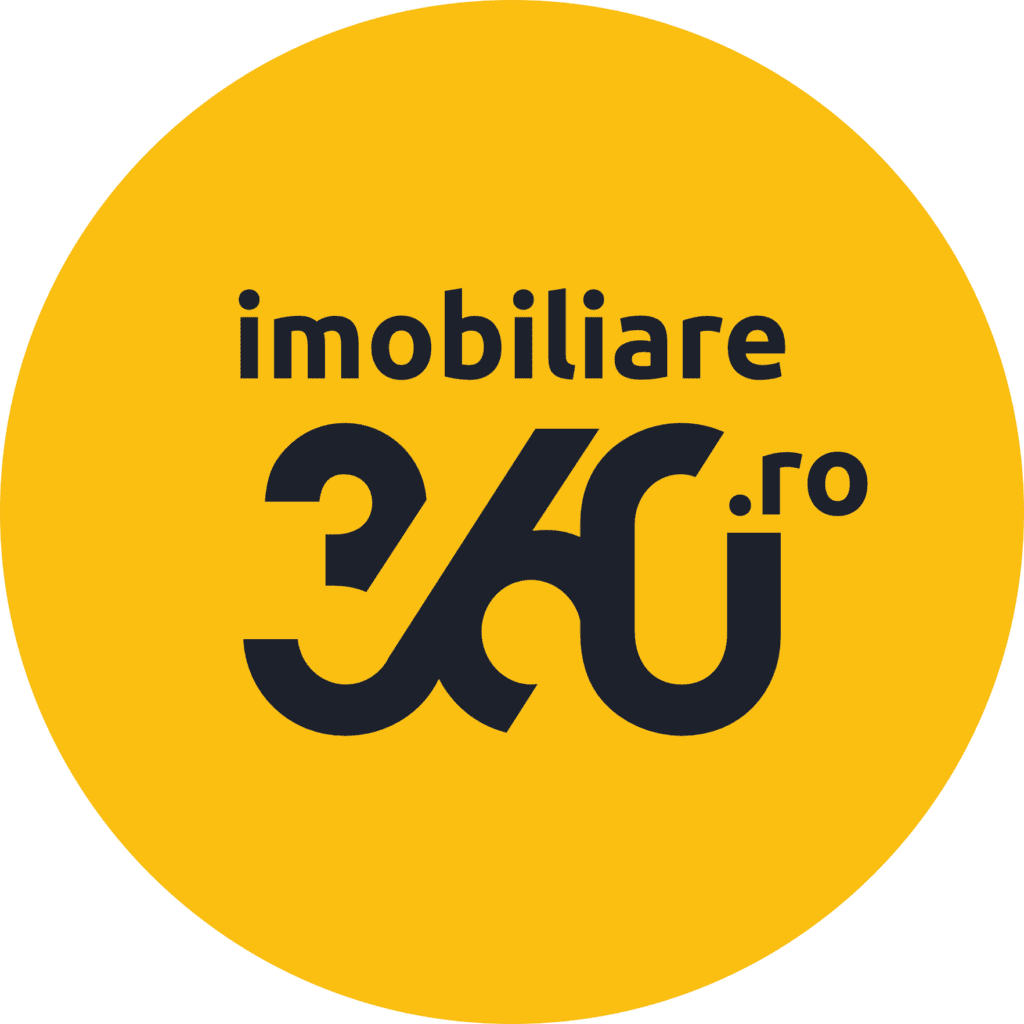
La imobiliare360.ro, am adoptat de la început viziunea de a oferi servicii de reprezentare exclusivă, îmbinând consultanța imobiliară realistă și corectă față de client cu integrarea tehnologiilor noi compatibile cu domeniul imobiliar.
Utilizarea inteligenței artificiale în fotografia imobiliară, tururile virtuale detaliate, vizionări cu ochelari XR, virtual staging și facilitarea vizionărilor de la distanță sunt instrumente prin care deschidem listările către piața imobiliară națională și internațională, simplificând procesul de cumpărare indiferent de locația geografică a clienților.
Marketingul personalizat pentru fiecare proprietate este o altă piatră de temelie a serviciilor noastre. Tratăm fiecare listare cu atenția și unicitatea pe care o merită, optimizând astfel șansele de a atrage cumpărători potențiali și de a maximiza vizibilitatea pe piață.
Reprezentarea exclusivă oferă proprietarilor o serie de beneficii semnificative, având la bază o atenție dedicată asupra vânzării proprietății lor, pe care le vom explora în continuare.
Prin definiție, agentul de reprezentare se concentrează exclusiv pe interesele vânzătorului, utilizându-și expertiza și resursele pentru a atrage cumpărători potențiali și a negocia cele mai bune condiții de vânzare.
Apoi, acest serviciu asigură că proprietatea este evaluată corect înainte de listare și este prezentată în cel mai avantajos mod posibil, urmând un plan de promovare personalizat.
Mai mult, reprezentarea exclusivă asigură colaborarea eficientă cu alte agenții imobiliare, deschizând astfel expunerea listării și posibilitățile de a găsi cumpărătorul ideal într-un timp mai scurt.
De asemenea, vânzătorii beneficiază de o comunicare transparentă și continuă, primind consiliere în toate etapele procesului de vânzare, până la finalizarea tranzacției.
De cealaltă parte, cumpărătorii care aleg să lucreze în reprezentare exclusivă beneficiază, de asemenea, de o atenție neîmpărțită în căutarea proprietății ideale. Agentul de reprezentare își va dedica întreaga expertiză și eforturi pentru a înțelege nevoile și dorințele cumpărătorului, filtrând ofertele de pe piață pentru a găsi cea mai bună potrivire, fiind de un real ajutor în procesul de negociere și în optimizarea de costuri.
Reprezentarea exclusivă trebuie să minimizeze stresul și incertitudinile, permițând clienților să navigheze prin procesul de vânzare – cumpărare cu încredere, sprijiniți de un profesionist dedicat care își asumă responsabilități clare contractual.
Cu toate aceste avantaje enumerate, conceptul de reprezentare exclusivă este adesea întâmpinat cu scepticism de către clienți, fiind o abordare pe care mulți nu o înțeleg. Aici, la imobiliare360.ro, ne asumăm rolul de educatori și informatori, demistificând reprezentarea exclusivă și subliniind avantajele sale printr-o comunicare transparentă și exemple concrete. Prin această abordare construim relații de încredere și transparență cu clienții noștri.
„Anul 2024 a început cu alte provocări economice și cu multe modificări fiscale, deci este esențial să fim aproape de clienții noștri și să fim consultanți, nu simpli agenți. Să le oferim soluții, răspunsuri la întrebări și recomandări, atunci când este cazul,” spune Sorin Sucala, Managing Partner la imobiliare360.ro.
Reprezentarea exclusivă nu este doar despre vânzări și cumpărări eficiente; este despre construirea unei relații durabile, de încredere și transparență între agent și client.
Într-o piață tot mai competitivă și diversificată, reprezentarea exclusivă oferă o bază solidă pentru tranzacții imobiliare transparente, eficiente și în cele din urmă, satisfăcătoare pentru toate părțile implicate. Acest trend modern în domeniul imobiliar este un semn al evoluției pieței din România, care îmbrățișează practici internaționale pentru a oferi servicii de cea mai înaltă calitate clienților săi.
La imobiliare360.ro, ne dedicăm să fim partenerii de încredere în toate aspectele tranzacțiilor imobiliare, asigurându-ne că fiecare pas este făcut cu grijă, profesionalism și, de ce nu, inovație.
- Asociația Profesională a Agenților Imobiliari din România
- imobiliare360.ro
- piața imobiliar
- Sorin Sucală
Lasă un răspuns Anulează răspunsul
Adresa ta de email nu va fi publicată. Câmpurile obligatorii sunt marcate cu *
Comentariu *
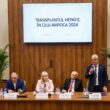
Transplantul hepatic intră în portofoliul medical de la Cluj-Napoca
Citește și despre galele the voices of business awards:, the voices of business awards cluj 2023, the voices of business awards alba 2023, the voices of business awards sibiu 2023, the voices of business awards brașov 2023, citește și:.

Un deceniu de excelență. Povestea Transilvania Executive Education în România

Fitch Ratings reconfirmă Oradea în grupa orașelor cu cea mai ridicată credibilitate

Aeroportul Oradea scoate la licitație spațiile comerciale din noul terminal

Peste 13 milioane de euro pentru GAL-urile din județul Bihor pentru dezvoltare

Star Transmission și Star Assembly lansează programul de internship Summer Experience
Zi de zi știri economice:.

IMAGES
VIDEO
COMMENTS
Better yet, tuition fees for Medical Schools range between £2,920-3,650 per annum. More specifically, medical education in Romania, whether it concerns Bachelor's, Master's or PhD studies, is both offered by public (state-run) and private Universities. Medical Universities in Romania offer English and Romanian instructed programs in ...
The affordability of medical education in Romania is a significant advantage for international students. Tuition fees for medical programs typically range from £4,500 to £8,000 per year, depending on the university and program. This makes Romanian medical universities a cost-effective choice when compared to many Western institutions.
Tuition fees for medical universities in Romania range from $6,400 to $10,700 per year. Since the country is a member of the European Union, prices for EU and non-EU citizens may differ. Still, tuition fees to study medicine in Romania are considered relatively low to low midrange for the continent.
The Romanian education system has undergone constant changes and renovations. Today, more than 40 public colleges and universities operate in Romania. There are two medical schools in Romania that currently offer English programs for medical studies: The University of Medicine & Pharmacy Iași & The University of Cluj Napoca.
Studying medicine in Romania is one of the best options in Europe and offers students excellent quality of education in English, French or Romanian language, a rich cultural heritage, affordable tuition and living expenses. Six-year medical programs integrating both 3-year pre-clinical and 3-year clinical studies leading to Doctor of Medicine (MD)degree, valid in all UE/CEE et recognised ...
Toxicology 4. Urology 6. Veterinary 7. Virology 22. Below is the list of 33 best universities for Medicine in Romania ranked based on their research performance: a graph of 791K citations received by 87.1K academic papers made by these universities was used to calculate ratings and create the top.
Medical specialisation in Romania are organised by almost all accredited medical universities and include all postgraduate studies such as Masters, PhD/Doctorate, Residency, Clinical specialties, surgical specialties, and Para clinical specialties, special courses etc. in Medicine, pharmacy, Dentistry, etc. Non EU/EEA and Suisse prospective specialists are admitted on application file basis ...
A-Level Chemistry and Biology are the required subjects. If you are a non-native English speaker you will have to prove your English proficiency by taking IELTS or TOEFL. Or you can sit an exam issued by the university around June or July time. You will need to know how to speak Romanian by the 4 th year of your studies, as you will be required ...
The teaching methodology at Romanian medical universities employs a variety of creative, task-based, innovative teaching techniques, and learning approach strategies. The learning is based around student-focused non-clinical and clinical courses in the form of seminars, lectures, practical training, independent research assignments and labs.
Carol Davila University of Medicine and Pharmacy is considered the best medical school in Romania. The medical curriculum, which is taught in English, is divided into 2 parts: pre-clinical and clinical education. The first department covers studies in the functional, morphological, and complementary sciences.
Our foundation was built on the belief that every student, regardless of their geographical location, should have access to top-tier medical education. Over the years, our mission has been unwavering: to simplify the journey for international students seeking a medical degree in Romania. At the heart of MedicEU is a deep-seated passion and ...
Students in Romania follow a six-year program of activity and there are courses taught in Romanian, English, French, and Hungarian. In this paper, we outline the organization of Romanian medical education at undergraduate and postgraduate levels and we indicate the opportunities for curriculum development.
Overview of Best medical schools in Romania. 1) Ovidius University Constanta. 2) University of Oradea. 3) Transilvania University of Brasov. 4) Carol Davila University of Medicine and Pharmacy. 5) University of Medicine and Pharmacy Craiova.
Abstract and Figures. For international medical students, the attractiveness of Romanian medical schools has increased since the country's accession to the European Union in 2007, as they offer ...
Why Study Medicine Today. Romania offers a unique blend of high-quality education, affordable tuition, and a rich cultural experience. Its medical schools are recognized worldwide, providing you with a degree that opens doors internationally. The country's focus on practical, hands-on training ensures you're well-prepared for the challenges of ...
"Grigore T. Popa" University of Medicine and Pharmacy - Iasi is one of the oldest educational institutions in Romania. It was founded in 1879. The Academic Medical Centre consists of 28 laboratories, several auditoriums and a library with more than 470,000 volumes.
The internationalisation of medical education in Romania has taken place in the absence of any formal national strategy. Rather, medical schools have developed their own strategies to attract international students as a way to generate additional income, to be able to recruit and retain academic staff and to develop their infrastructure.
The organization of Romanian medical education at undergraduate and postgraduate levels is outlined and the opportunities for curriculum development are indicated. Abstract Romania is a country in south-east Europe, which has experienced major changes in political, educational, and healthcare systems. At the time of writing this paper, there are thirteen accredited Faculties of Medicine, which ...
WFME (World Federation for Medical Education) FAIMER (The Foundation for Advancement of International Medical Education and Research) MBBS Colleges in Romania. Below is the updated 2023-24 of all Medical or MBBS Colleges in Romania officially made by India's Medical Council.
All Romanian Medical Universities offer postgraduate medical programmes for EU and non-EU medical graduates.. What are the Benefits of Postgraduate Training for Medicine Students in Romania. Postgraduate medical study focuses on the acquisition of a medical specialty (or residency) and covers theoretical and practical training, according to the approved EU and national training curricular ...
Chapter 1: An Introduction to the Human Body, withou t Medical Imaging ... - Applying for the document for recognition of international studies at the Ministry of Education in Romania. The candidates that pass the admission exam at Titu Maiorescu University must have their studies recognized by the Romanian Ministry of Education:
Life expectancy development in Romania by gender. Romania offers benefits of a universal healthcare system.The state finances primary, secondary and tertiary healthcare. Public health campaigns are independently financed by the Government of Romania.The Ministry of Health of Romania is required to manage and supervise the public healthcare sector. For 2013, the budget allocated for the ...
Medical education, like many other areas that involve direct engagement with the beneficiary, or patient, will have to adapt to the new circumstances. ... While the findings prove to be very useful to design necessary interventions and adjustment to medical education in Romania during COVID-19 pandemic, the prevalence of burnout in medical ...
Energy Mirror Of Romania View Posts. Enjoy Transylvania View Posts. Fashion View Posts. Fonduri Europene View Posts. Hobby/Timp liber ... Transplantul hepatic intră în portofoliul medical de la Cluj-Napoca. 17 aprilie 2024. ... Transilvania Executive Education (TEE) sărbătorește 10 ani de activitate. Asociația a fost fondată în 2014, sub…
The Roma constitute the largest ethnic minority in Europe, estimated to number between 12 and 15 million. They currently reside predominantly in Bulgaria, Romania, Slovakia, Hungary, the Czech Republic, and Slovenia, but migrations in the last two decades have led to a rise in numbers settling across European Union (EU) states [1,2].Typically living in economically marginalized regions, they ...